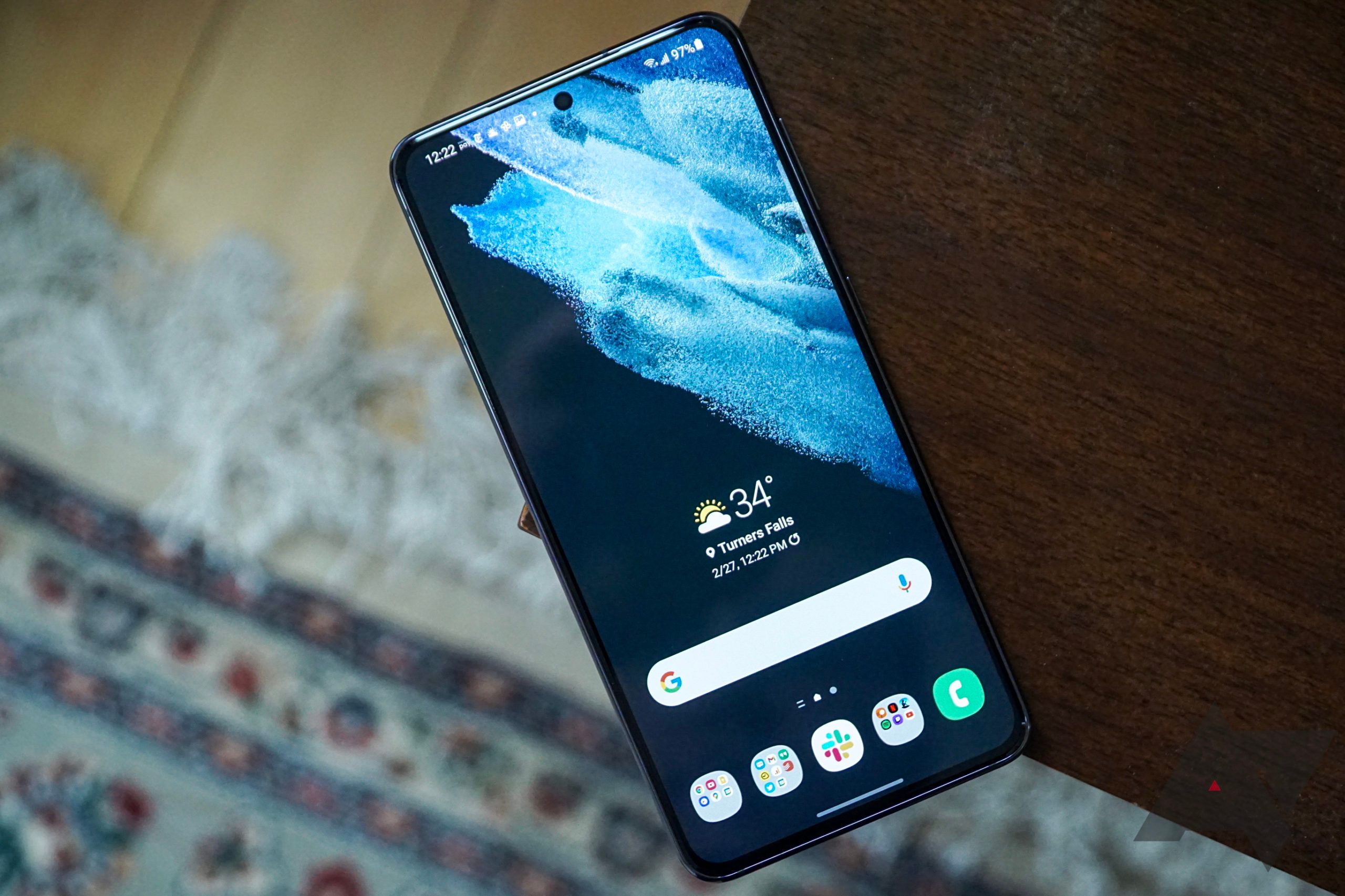Gone are the days when Samsung was infamous for the TouchWiz Android skin. The company's One UI software skin has received positive responses from users and reviewers. With a long list of features, smooth performance, and timely updates, One UI has become the prime reason to get a top Samsung Galaxy phone over its rivals. Here are the best One UI features you should use on your Samsung Galaxy device.
1 Automate tasks with Routines
Samsung removed Bixby branding from Routines. It's now a part of the device Settings app. You'll find the option under Modes and Routines. You can create any number of automations that perform selected actions exactly when you need them.
Routines (previously known as Bixby Routines) can be triggered when you connect to certain Wi-Fi or Bluetooth devices, when your Samsung Galaxy Watch detects a specific workout, when your battery drops below a certain percentage, and more. It's Samsung's IFTTT (If This Then That) implementation with an easy-to-use interface and a tight One UI integration. Let's check some of the routines you can use to automate tasks like a pro.
You can create a routine called Slow charging that disables the fast wired charging function during sleep hours to preserve battery health. Once the routine ends, fast charging kicks in again and tops off the phone for when you wake up. You can set up another routine called Migraine that dims your phone display, turns off sound, and enables a blue light filter. You can check all built-in routines by going to Settings > Modes and Routines > Routines or creating one from scratch.
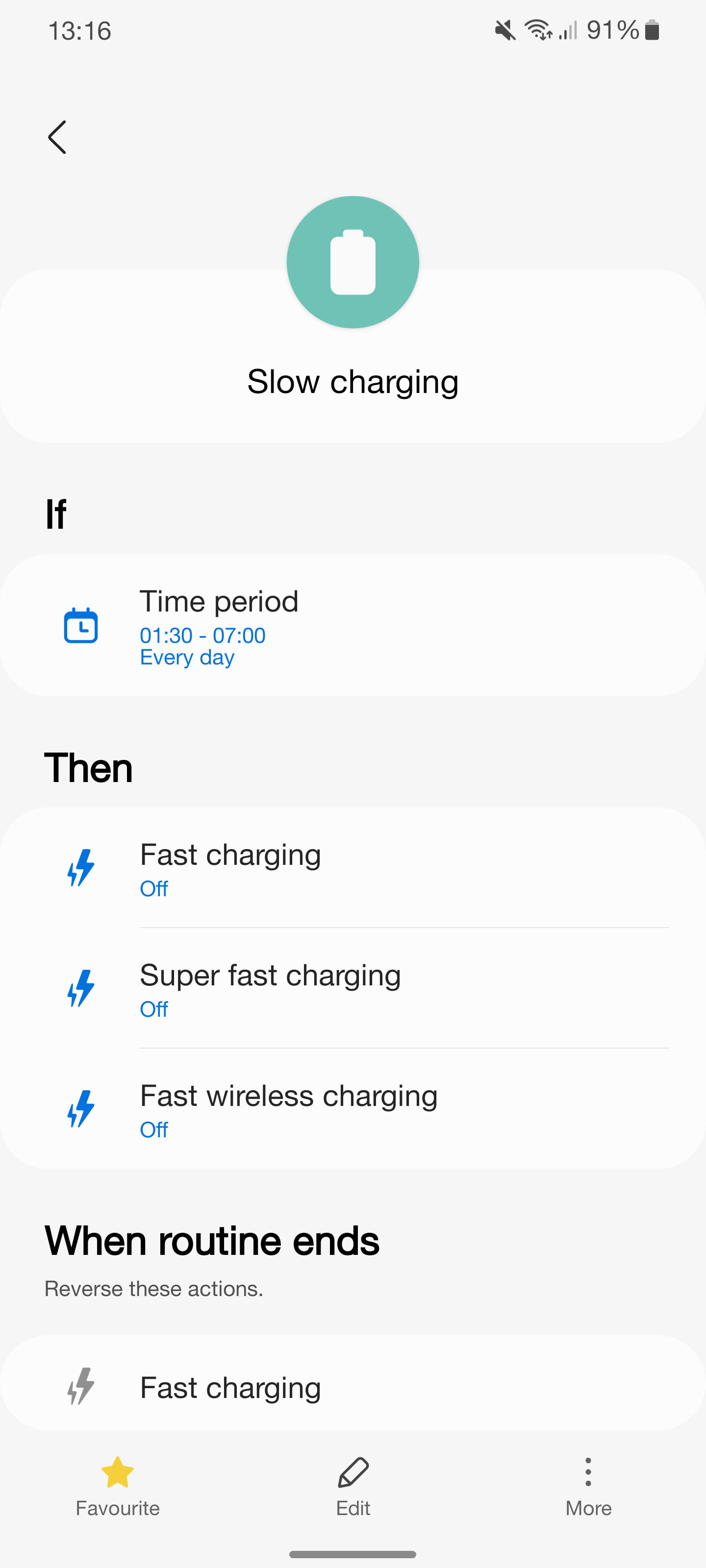
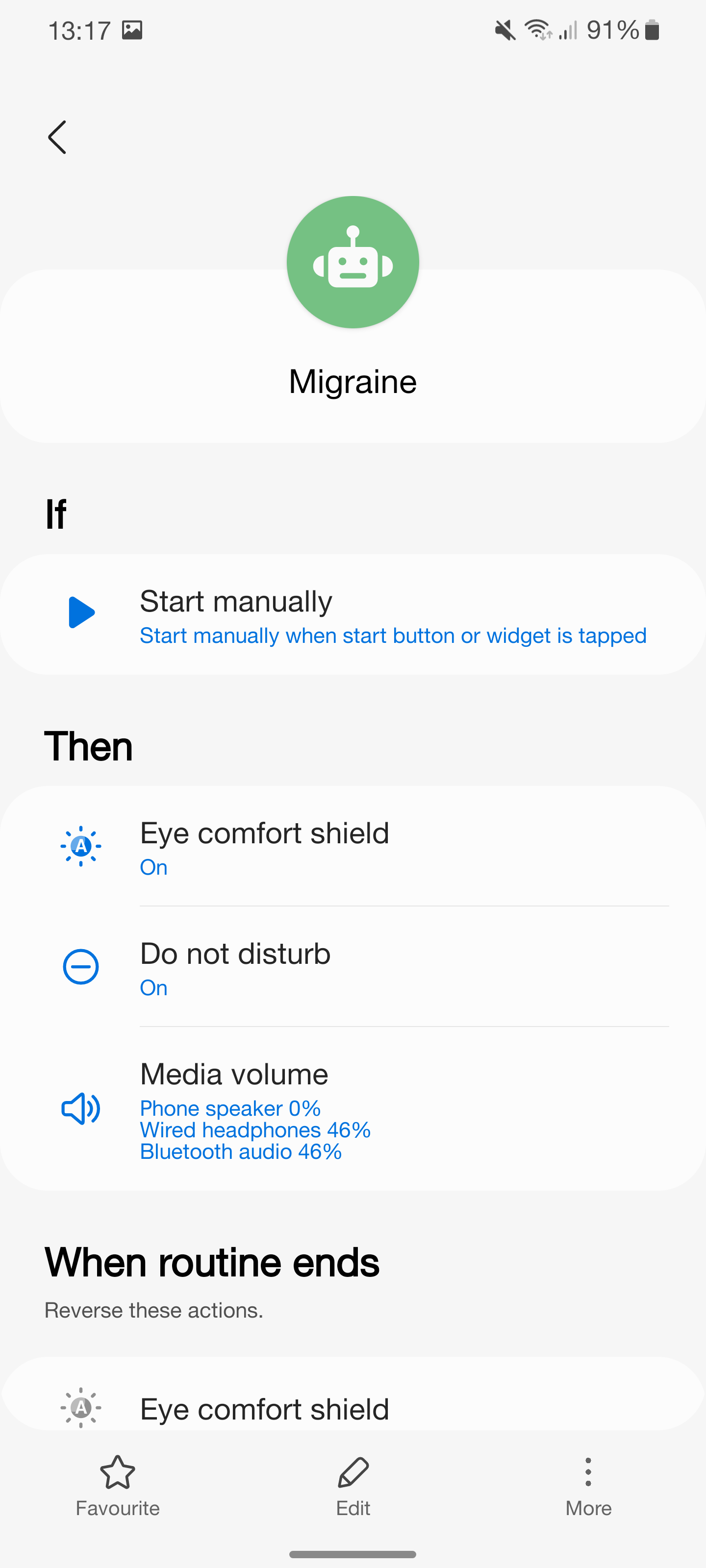
2 Open apps in pop-up windows
As well as opening two apps side-by-side like other smartphones, Samsung lets you open them in free-form windows that can be moved, resized, and minimized. They're similar to Google's chat bubbles but more helpful and reliable. Unlike bubbles, pop-up windows work with every app that supports multi-window, not just messaging apps. Although it may not be suitable for small phones like the Samsung Galaxy S22 and Samsung Galaxy S23, having pop-up windows is an excellent add-on for foldables like the Galaxy Z Fold 4.
There are many use cases for this. One is watching a YouTube video while using other apps without paying for YouTube Premium. You can open YouTube in pop-up mode, resize the window, play the desired video, and tap full-screen. When you do so, YouTube plays the video full-screen within the confines of the window. It's better than a split screen.
- Swipe up and hold from the bottom to open the multitasking (recent apps) menu.
-
Tap or long-press the app icon at the top and select Open in pop-up view.
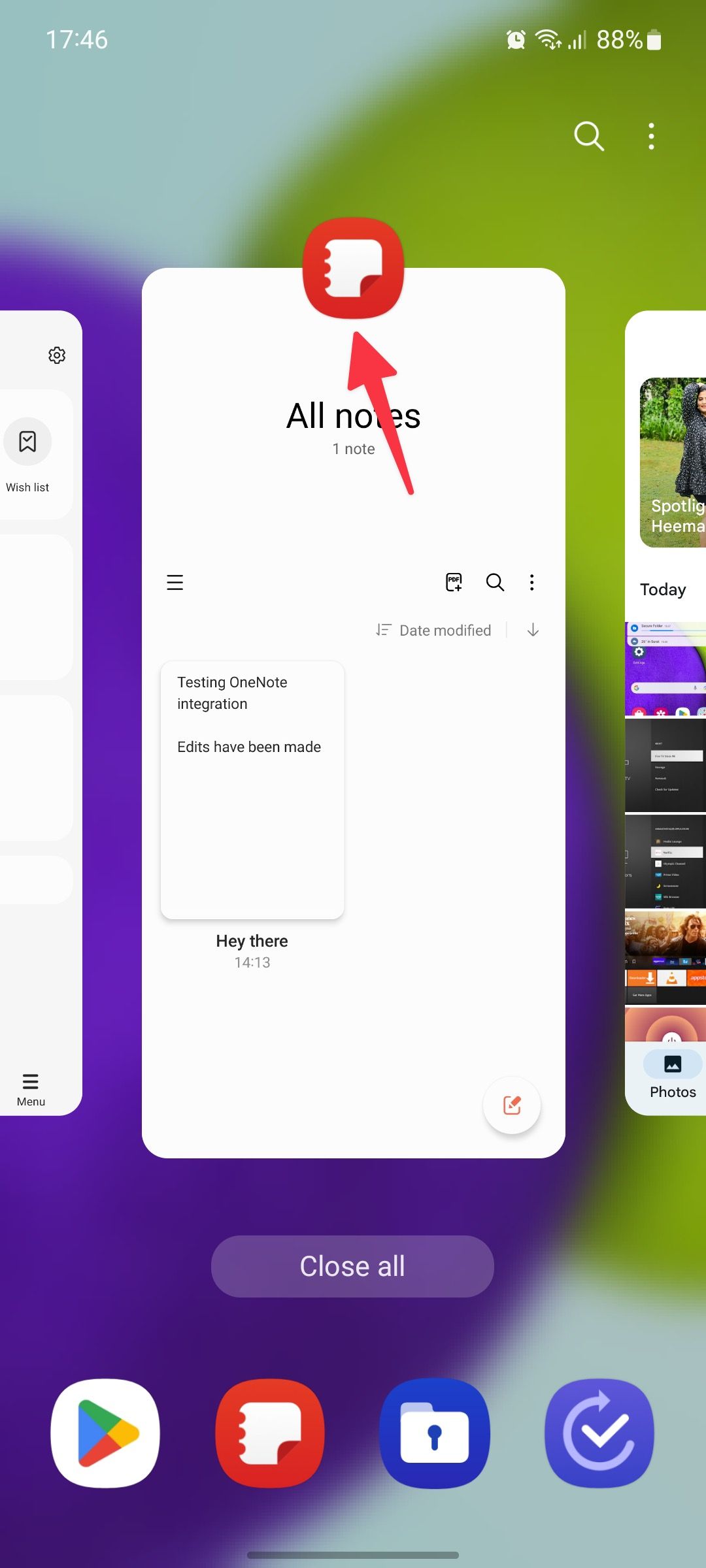
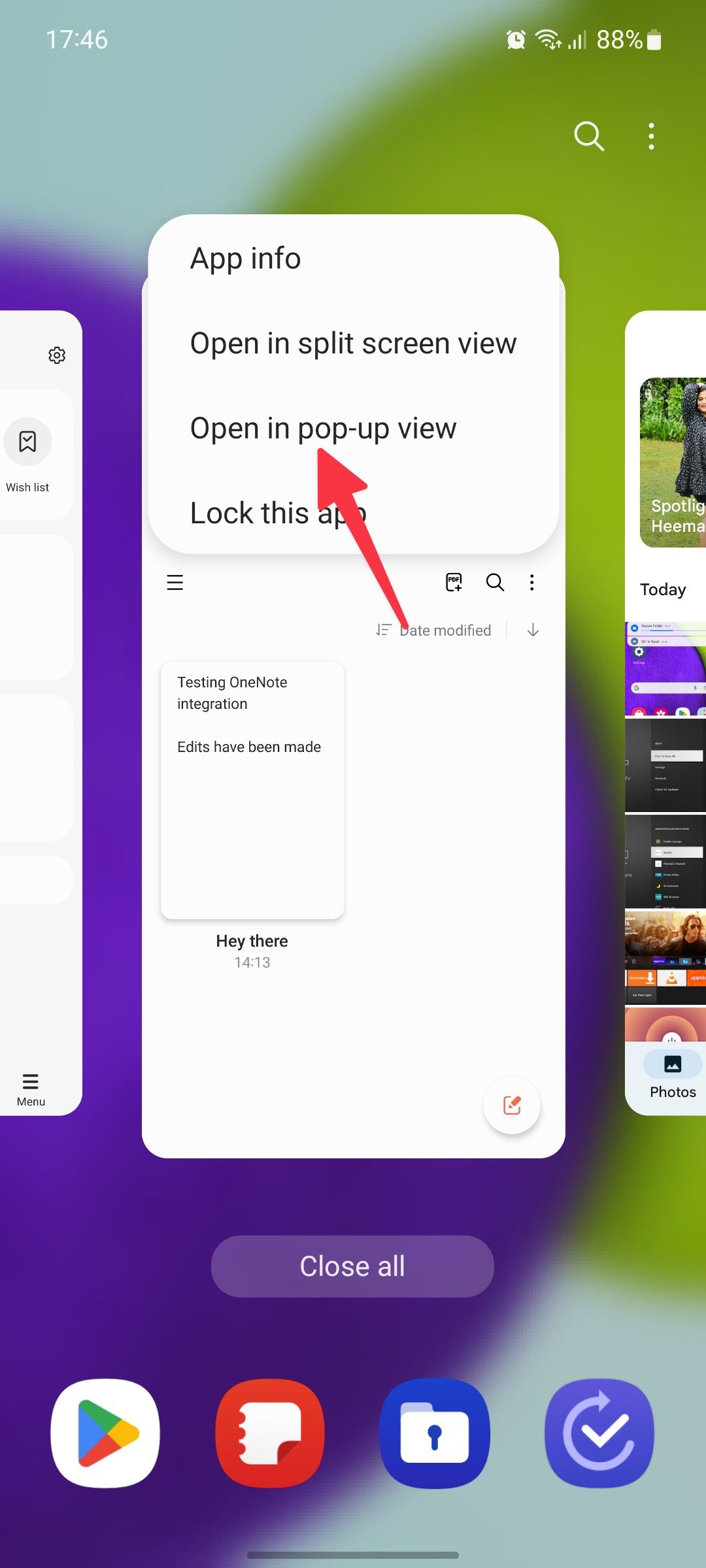
-
Tap the horizontal bar at the top to close, minimize, and expand the pop-up view.
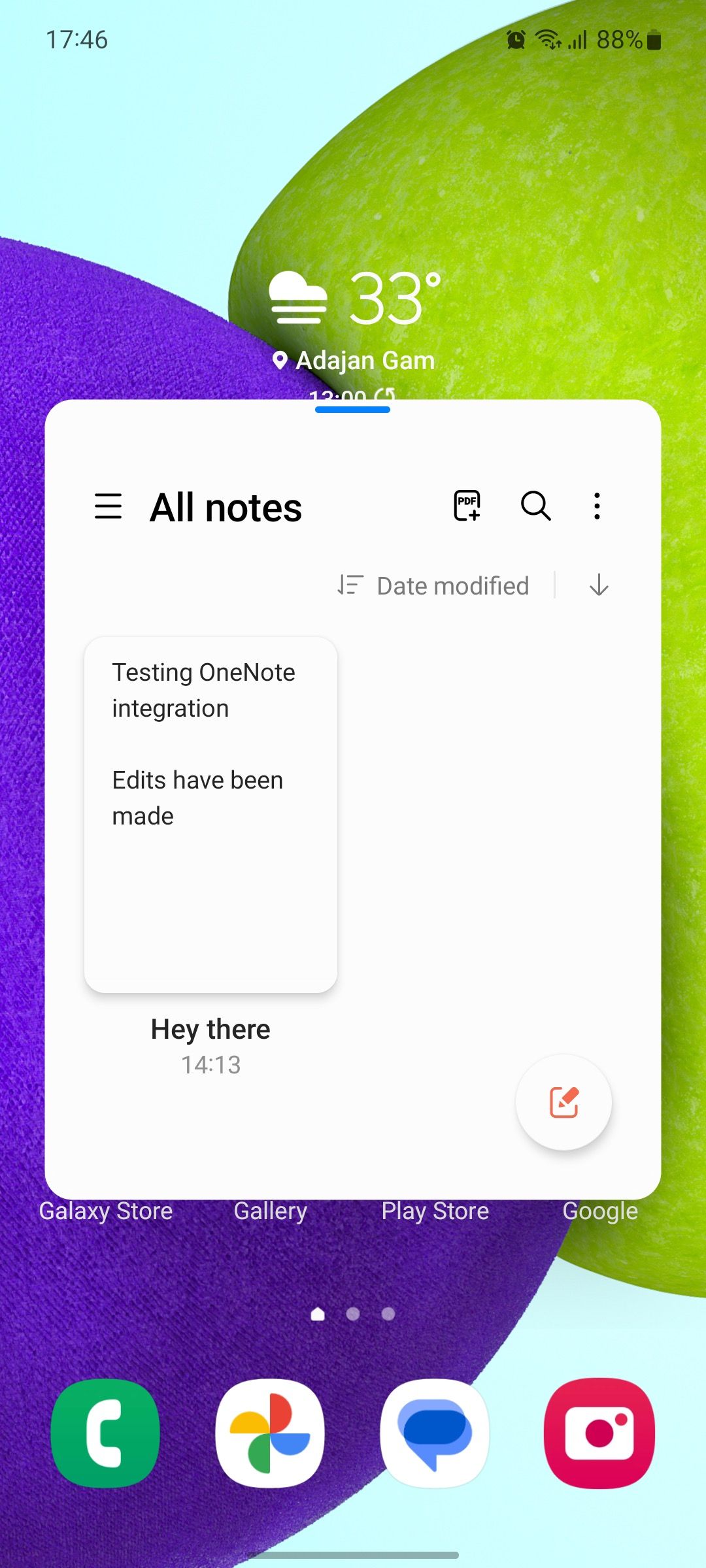
You don't need to use split-screen mode to browse apps side by side. With features like RAM plus, you can keep more apps open in the pop-up view.
3 Hiding status bar icons
When Google released Android 6.0 Marshmallow, one of our favorite features was the System UI Tuner which allowed you to modify parts of your system. Google removed the UI Tuner in subsequent releases of Android, but if you're a Samsung user, Good Lock is ready to fill the void. It's a solid offering from Samsung to add new features to your phone.
Good Lock replicates many things the old UI Tuner was capable of. If you always keep your phone on vibrate and connect to a smartwatch, you don't need the status bar icons to tell you that. Switching them off makes everything look cleaner. If you're in the U.S., some Samsung phones, such as the Galaxy S23 Ultra, indicate that NFC is switched on, which is unnecessary if you ask us. That, too, can be disabled. To try this, download QuickStar in the Good Lock app, and look for the Visibility of Indicator Icons menu.
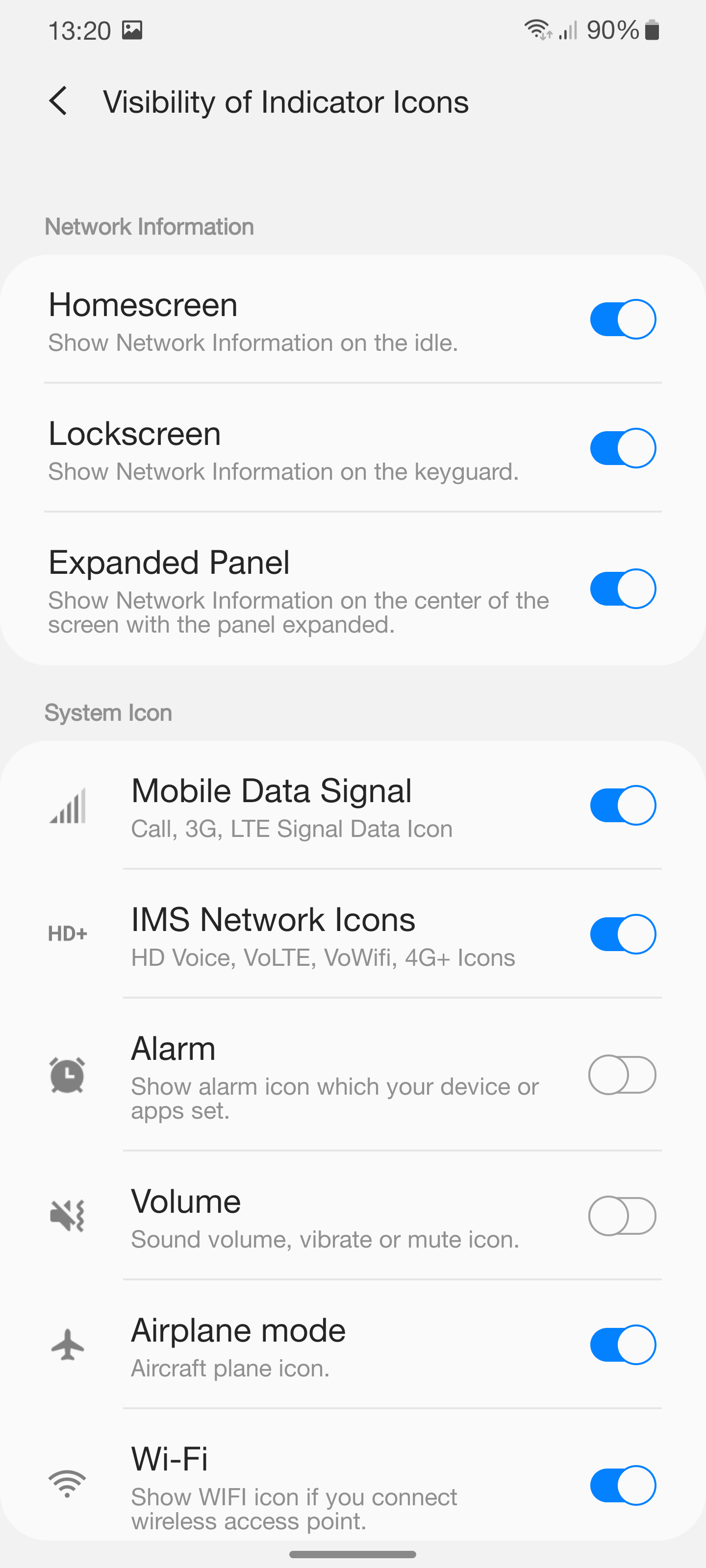
4 Keep the screen on while viewing
The Google Pixel 4 came with Screen Attention, which keeps the screen on while you're looking at it, overriding the typical timeout limit. While this was a first for Pixels, Samsung had been doing the same thing since 2012 when it debuted Smart Stay on the Galaxy S3, before eventually rolling out the feature to older phones.
That was nine years ago, so it shouldn't be surprising that many people forget it exists, especially as it's been renamed and buried in a sub-menu.
- Open Settings on your Samsung phone.
-
Scroll to Advanced features and open Motions and gestures.
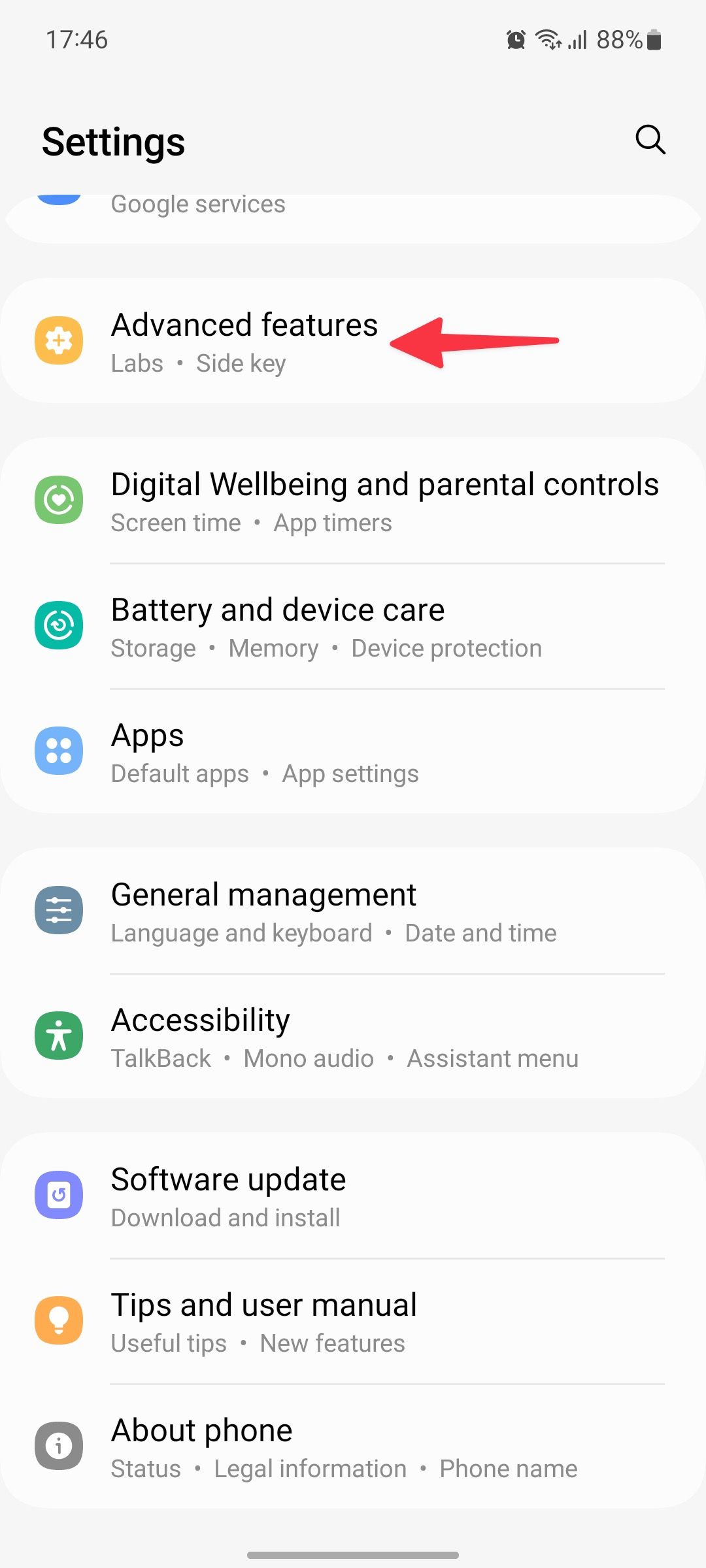
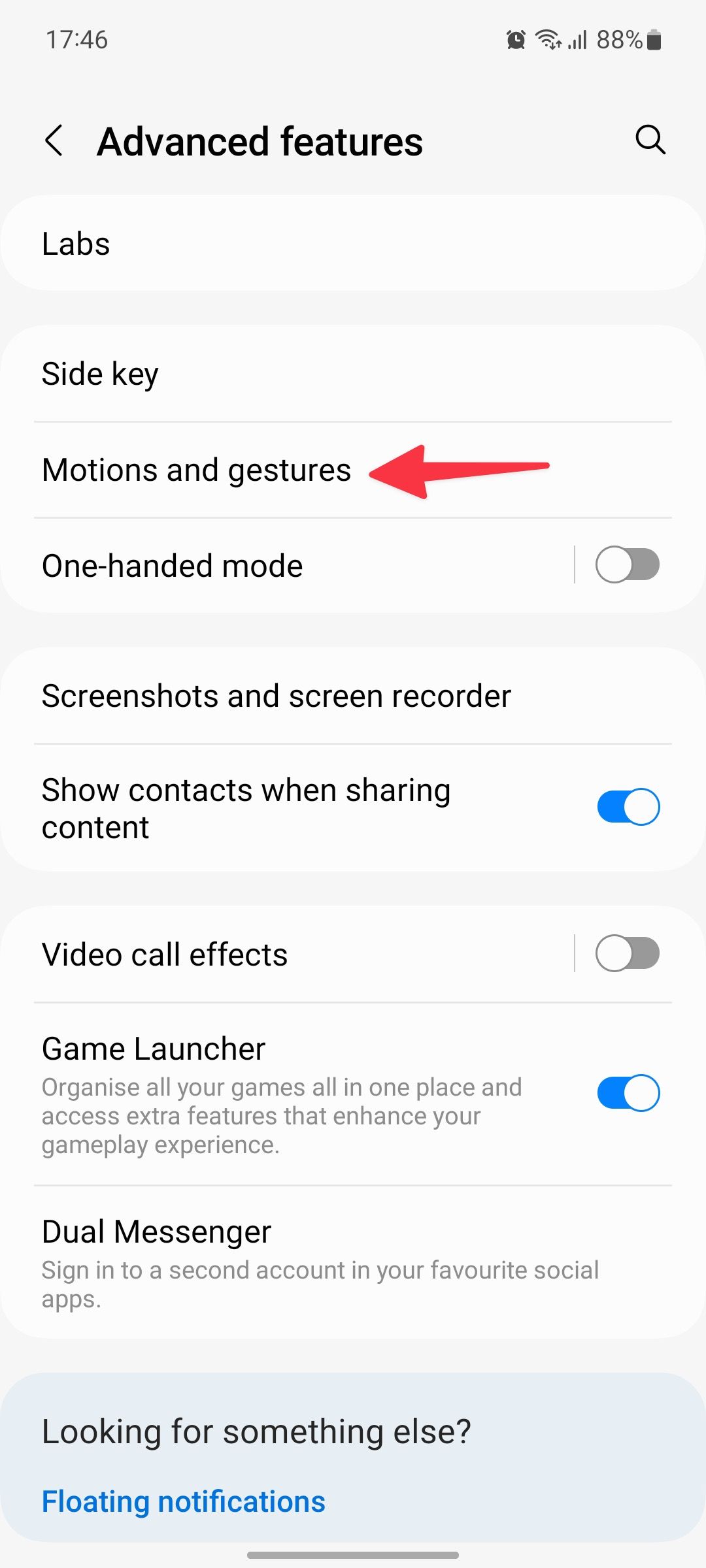
-
Enable the Keep screen on while viewing toggle.
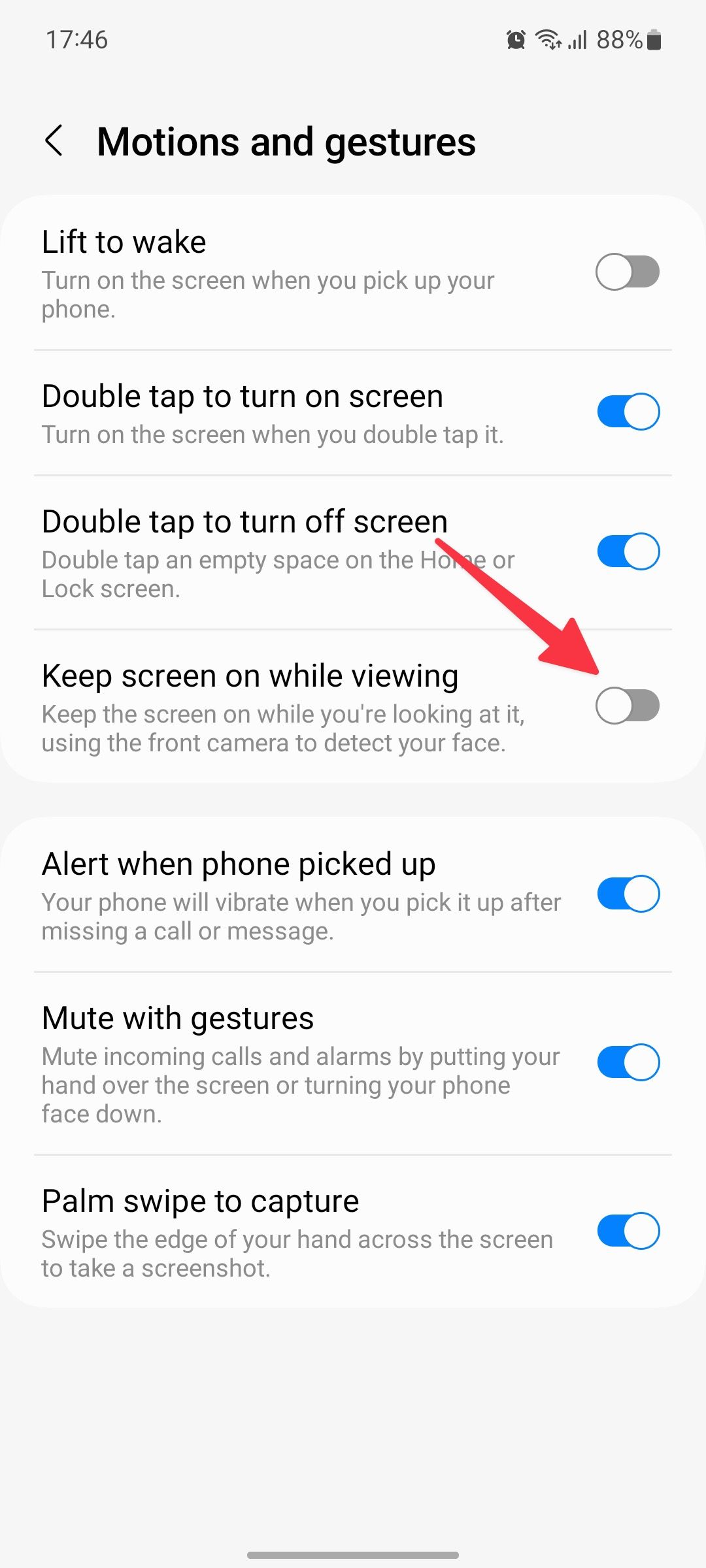
You can also use S Pen for a smooth web experience.
5 Edit your share sheet
Navigating through dozens of installed apps in the share sheet can be tiring and tedious. However, you can edit the share sheet and keep your frequently-used apps at the top. Apple also offers the same on iOS.
- Open your share sheet, and tap the pencil icon in the upper-right corner.
-
Drag and drop and pin your favorite apps at the top.
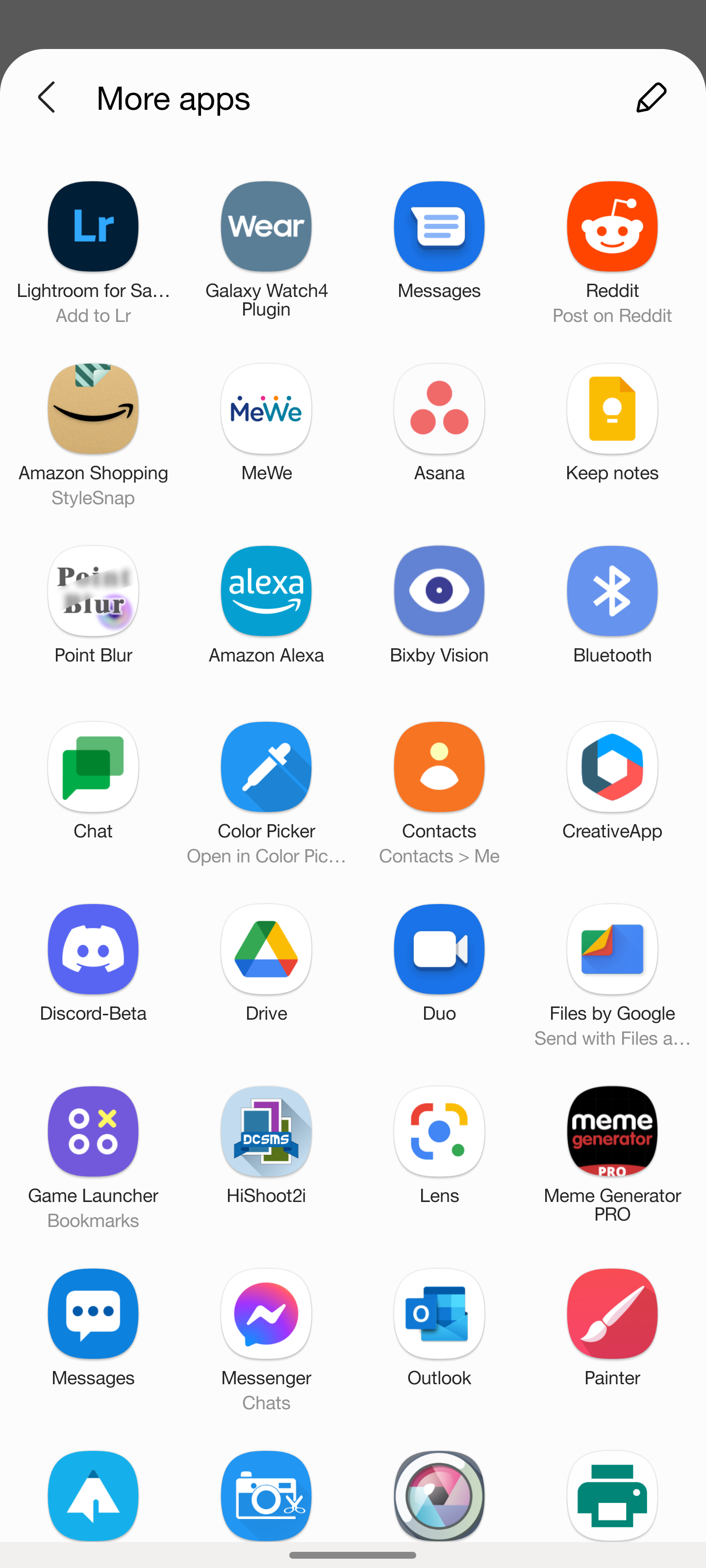
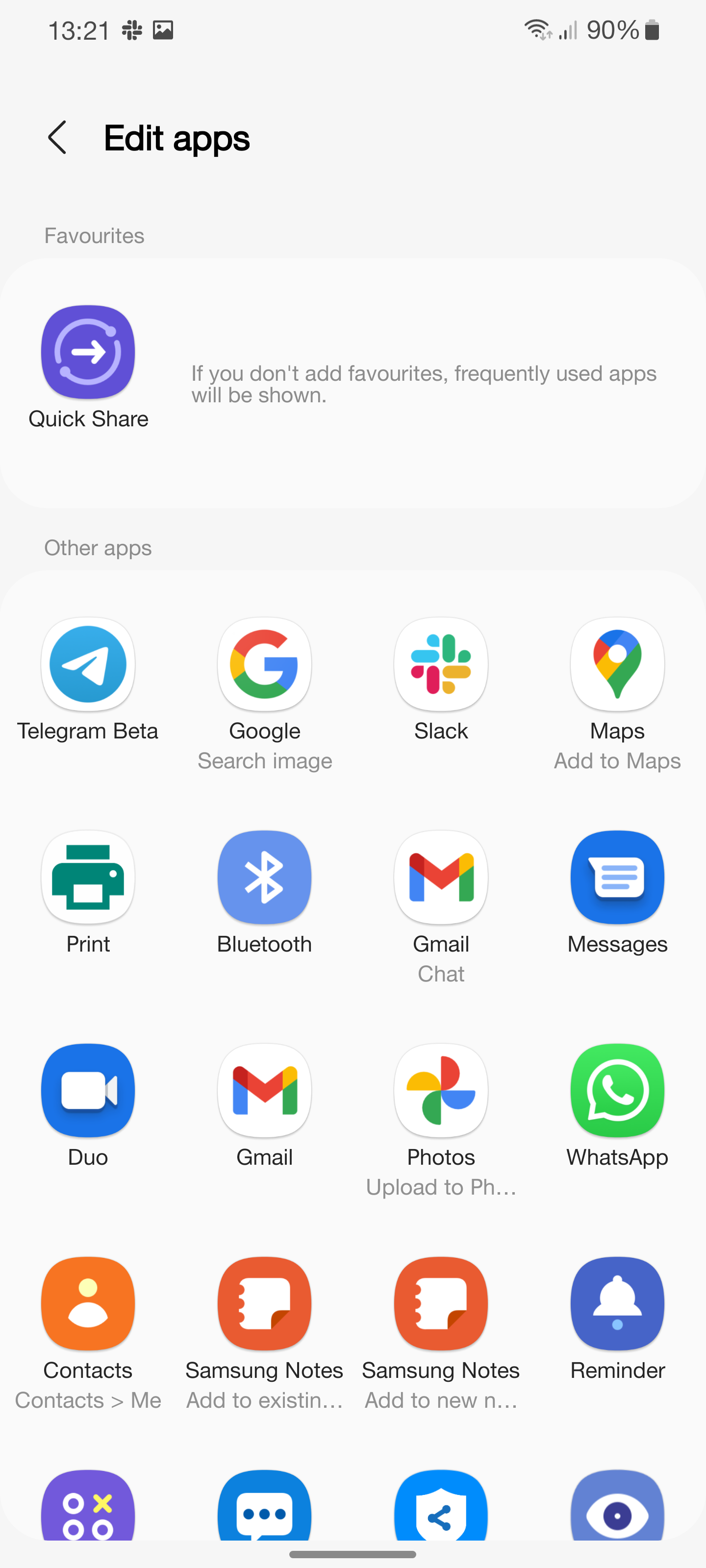
-
The next time you share something, your preferred appears above all the others for quicker access.
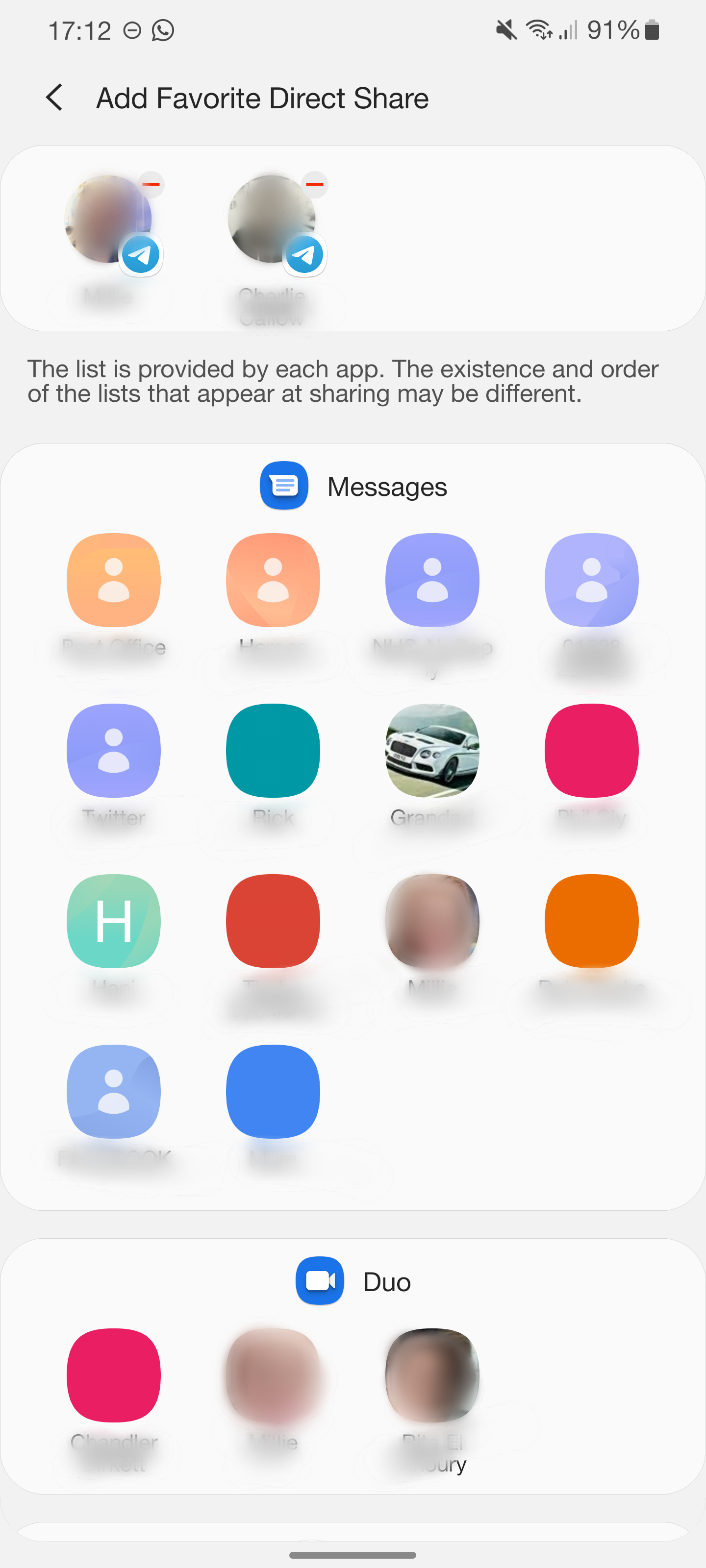
6 Make pop-up notifications less obtrusive
Pop-up notifications take up a lot of room at the top of your screen, which can be annoying if you're watching something. You could switch them off entirely, but Samsung offers a middle-ground option.
- Go into your Settings menu and tap Notifications.
-
Select Notification pop-up style.
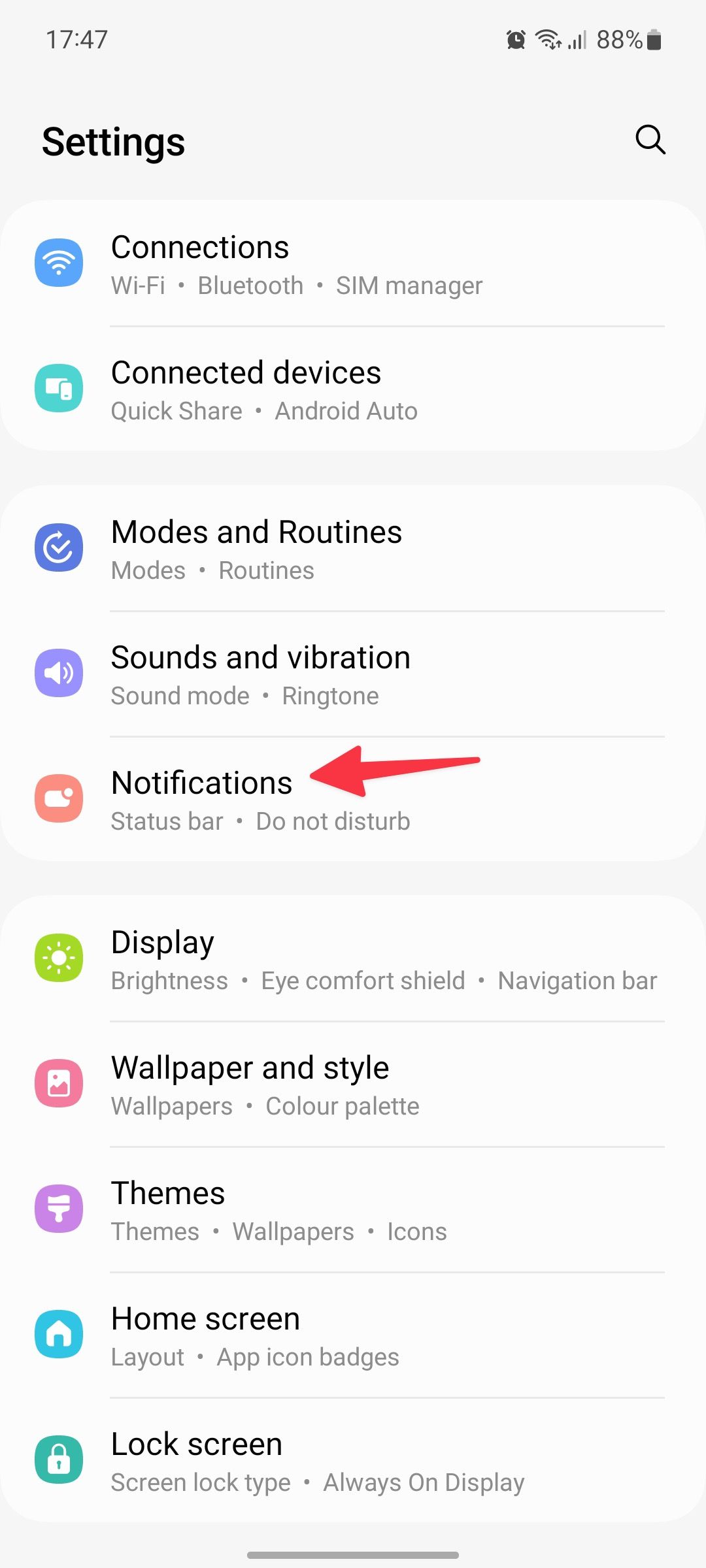
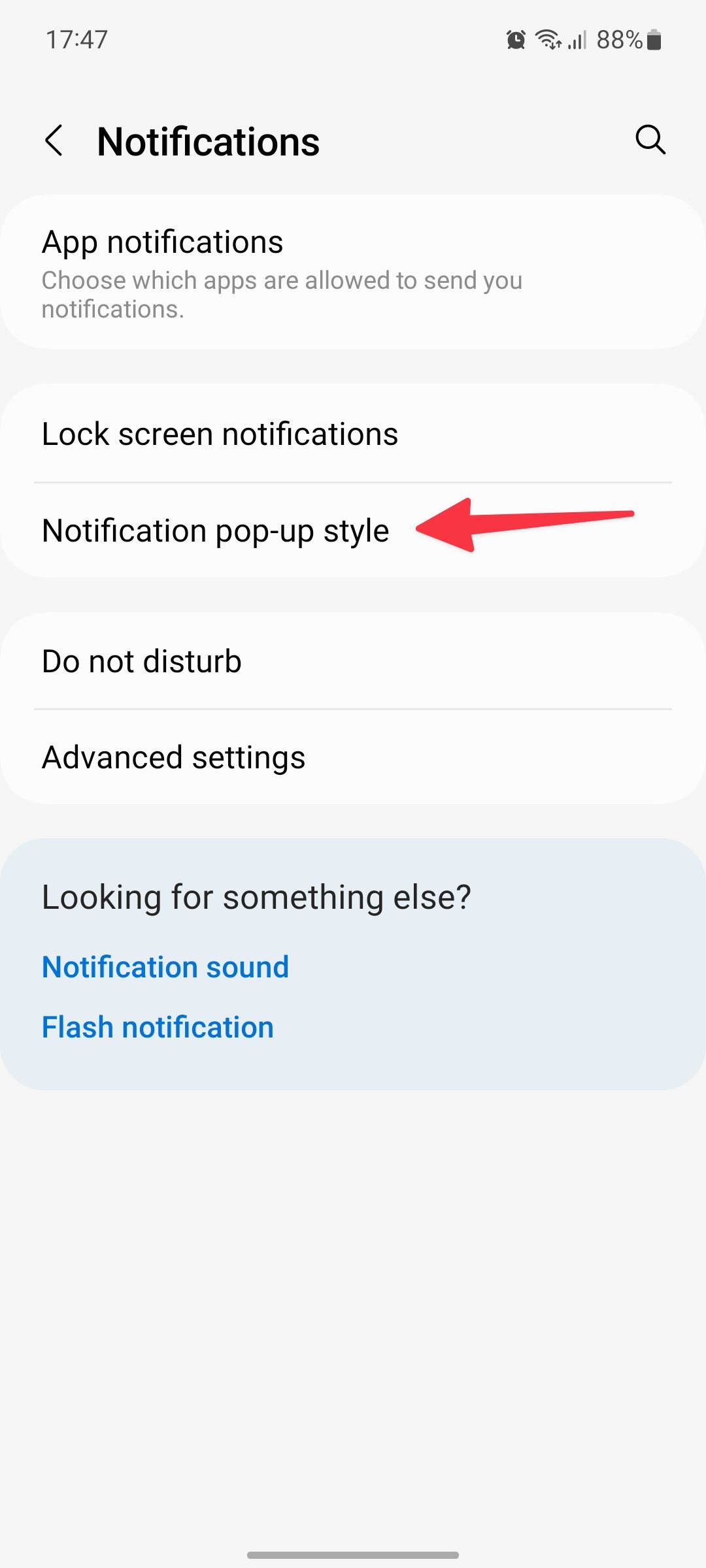
-
Choose between the default Detailed notifications or the compact Brief ones. The advantage of using the Brief option is that you can expand them to show more details with smooth animation.
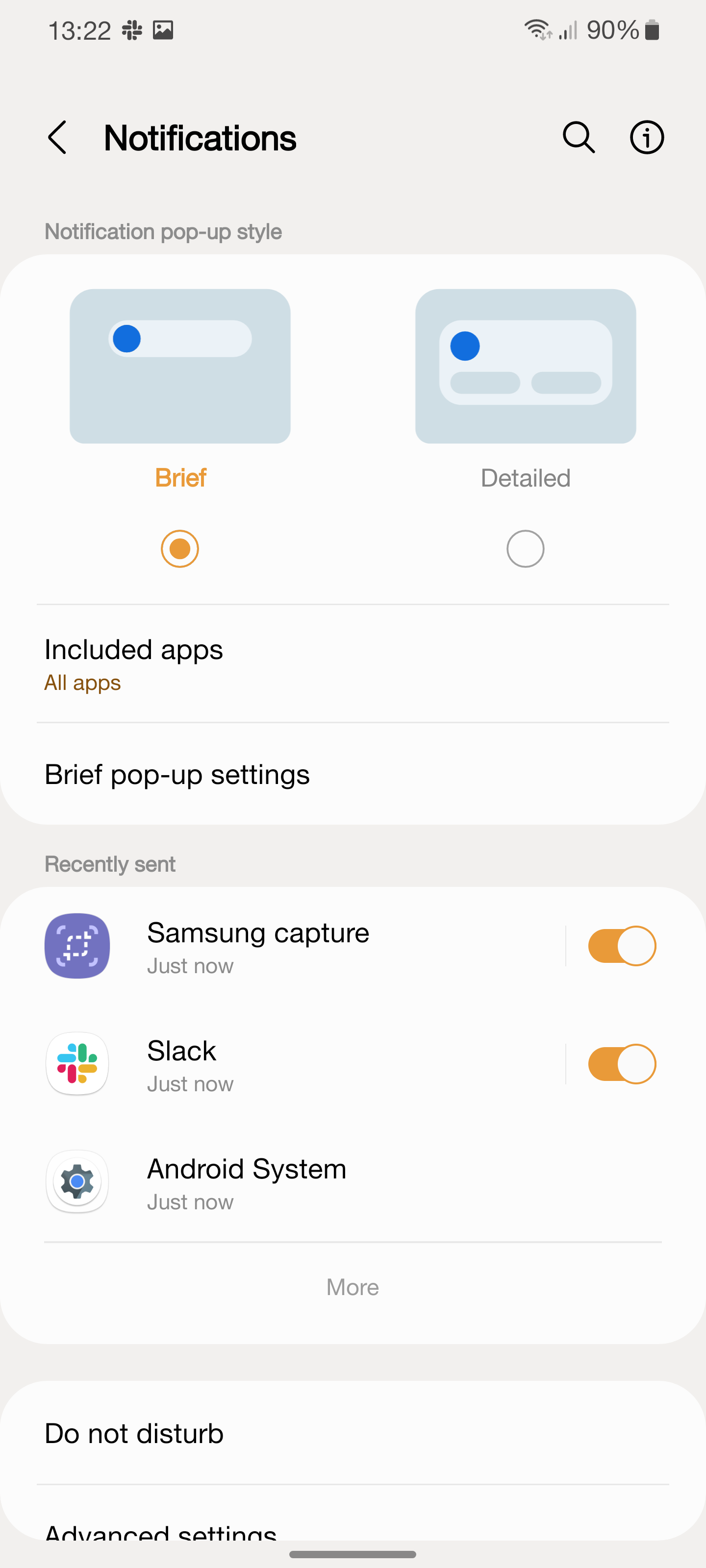
7 Change your lock screen shortcuts
You may either never use lock screen shortcuts or use them all the time. And you may not prefer the default Phone and Camera shortcuts on the lock screen. You can replace them with other apps and options using the steps below.
- Open Settings and scroll to Lock Screen.
-
Select your Lock screen.
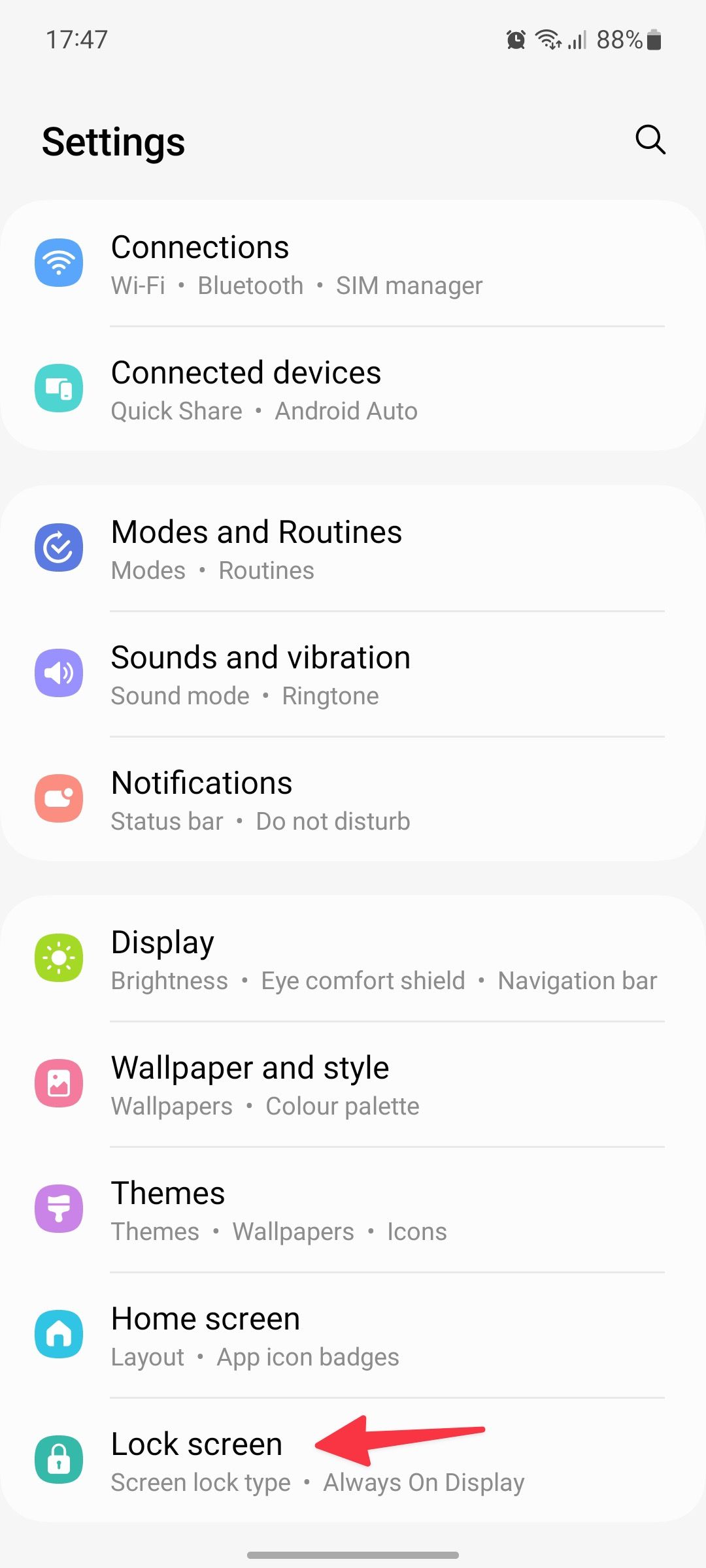
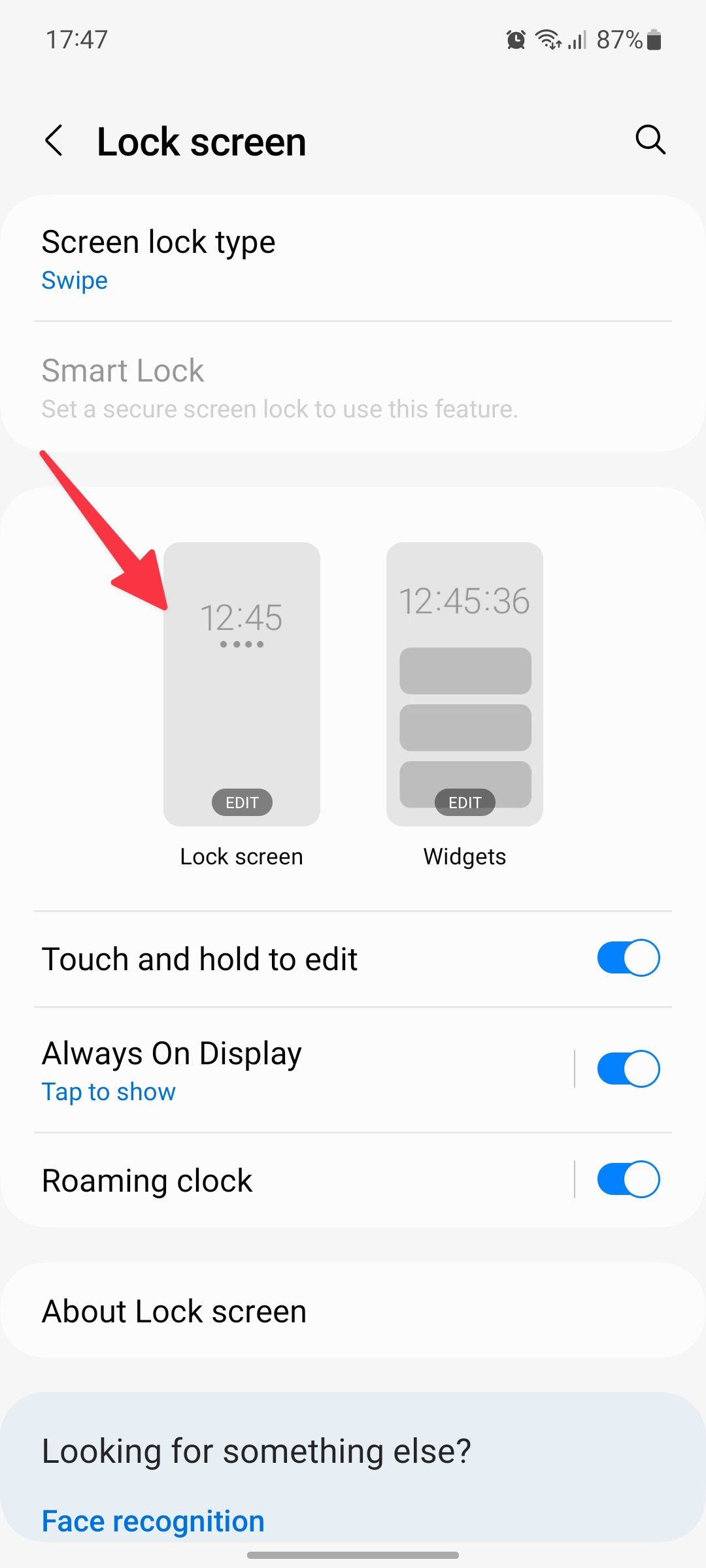
-
Tap the lower-left shortcut and replace it with another option. Repeat the same for the lower-right corner.

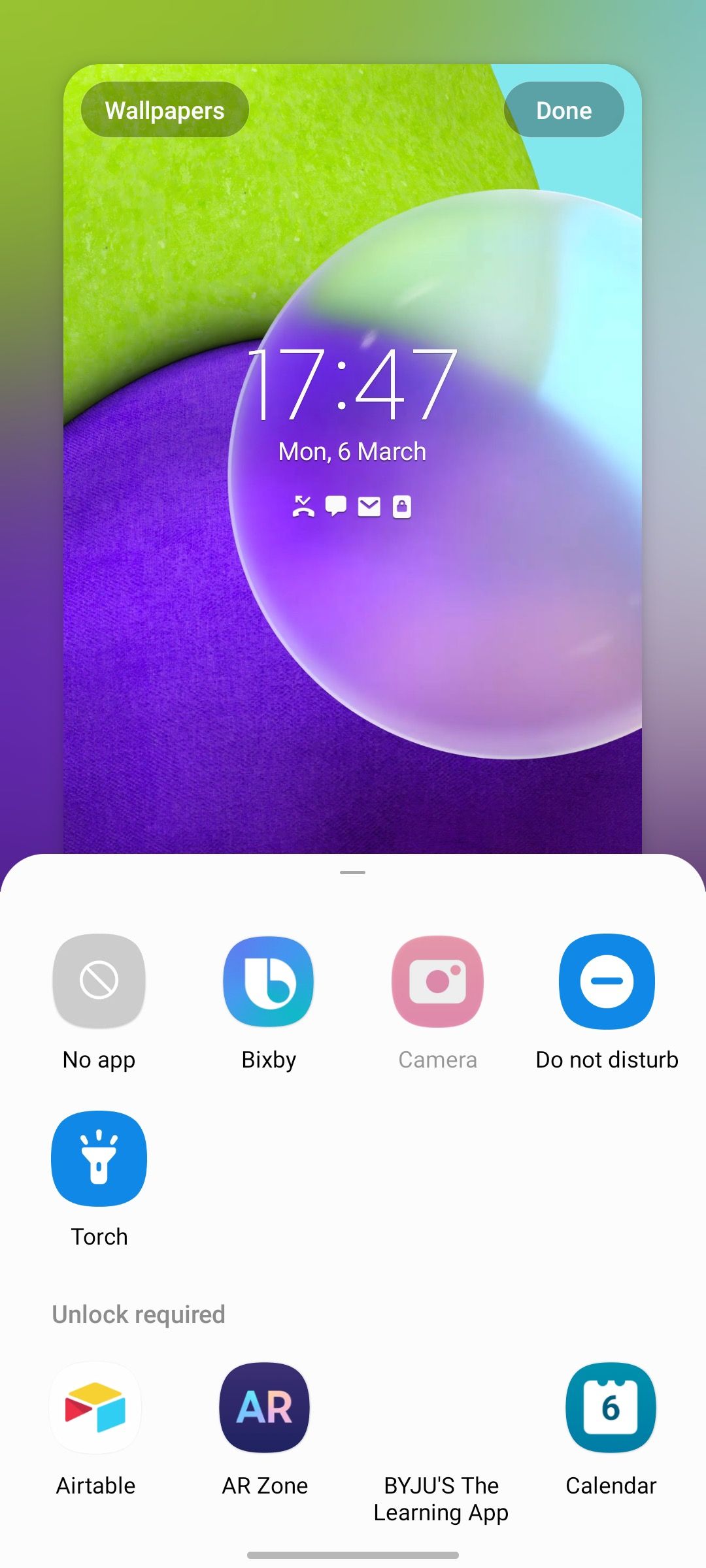
You can place a torch and enable DND from the lock screen.
8 Use lock screen widgets
Google removed lock screen widgets in Android 5 Lollipop, but Samsung brought them back in One UI 3 based on Android 11.
- Open Lock screen in device Settings (check the steps above).
-
Select Widgets.
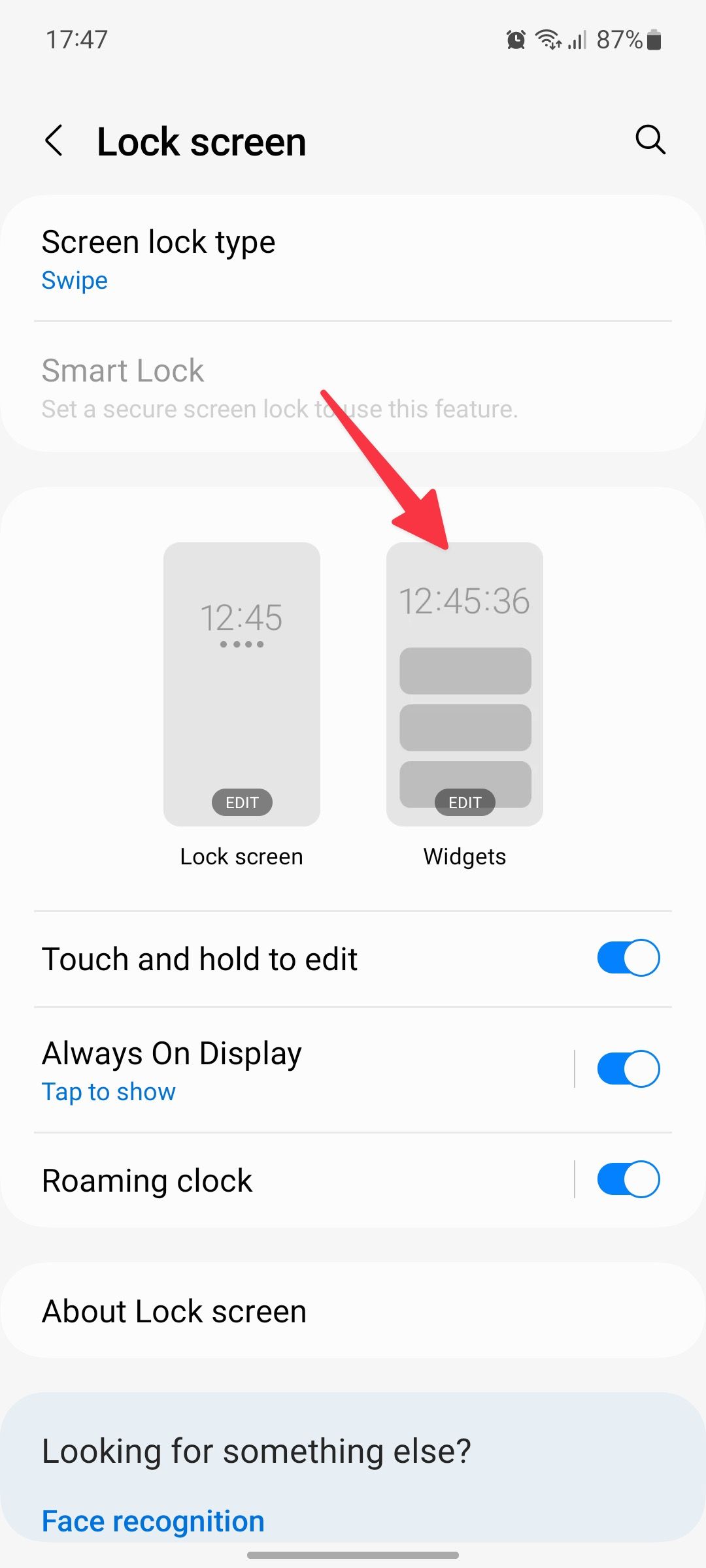
-
Enable, disable, and reorder built-in widgets to your preference. You can't use any of the top third-party widgets and are stuck with what Samsung offers. You can choose from music, weather, calendar events for the day, your next alarm, Digital Wellbeing, your favorite Routines, and the voice recorder.
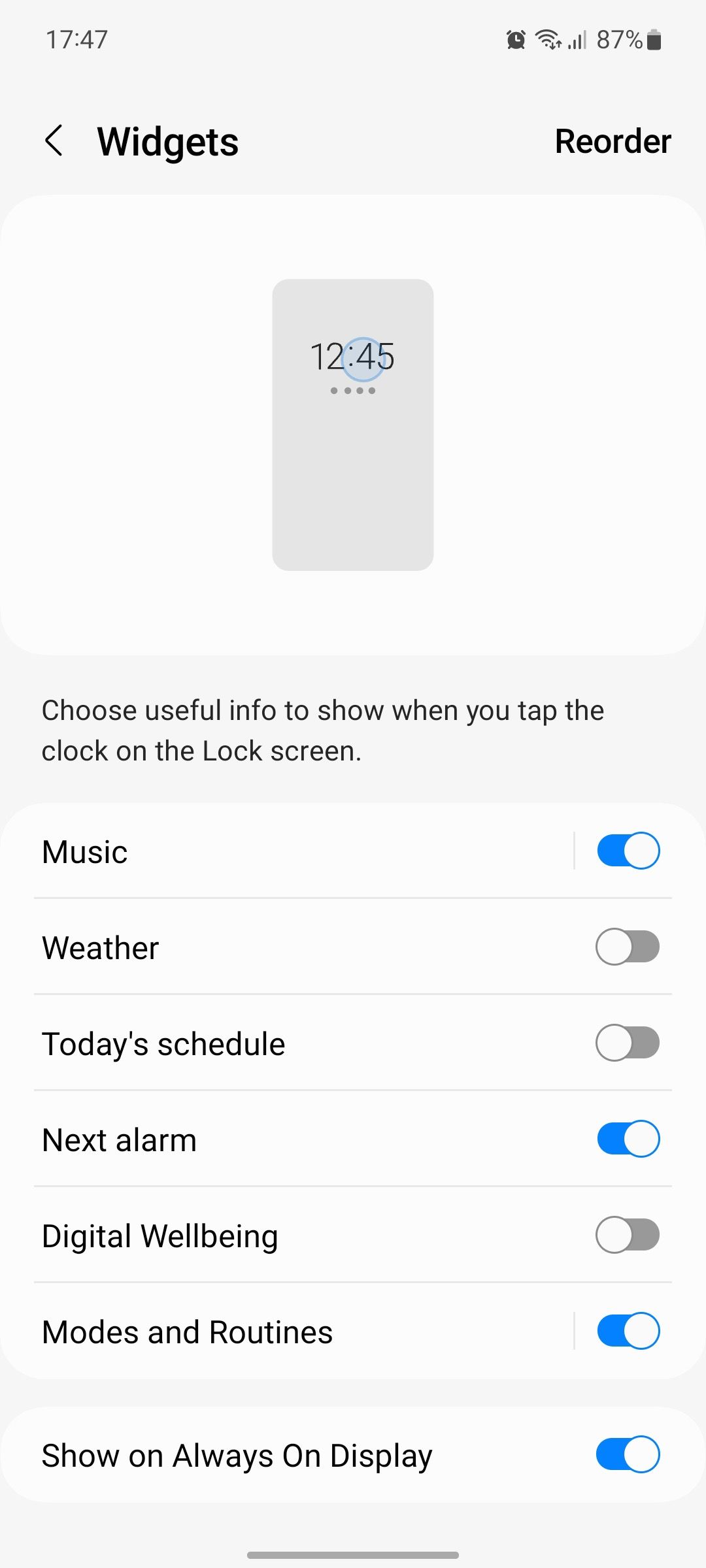
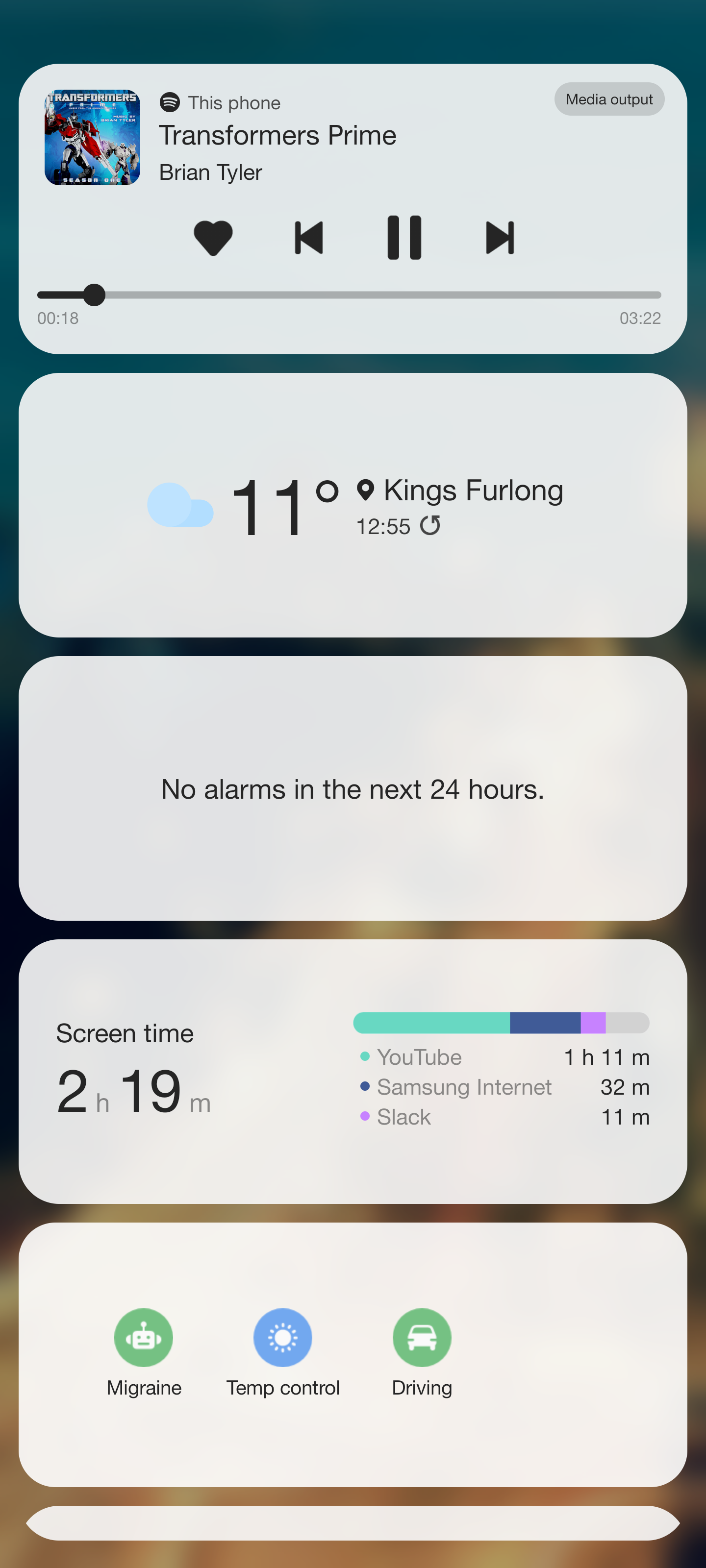
We hoped Samsung would add more options in future updates like One UI 4 or One UI 4.1 (based on Android 12) and the latest One UI 5 running Android 13. It might not be as versatile as iPhone or what we had in the Android KitKat days, but it's better than nothing, and being able to look at the calendar for the day without unlocking the phone has proven useful. You can't use stacked widgets on the lock screen, though.
9 Customize side key
You can customize the side key and open your preferred app when double-pressing it.
- Open Settings and scroll to Advanced features.
-
Select Side key.
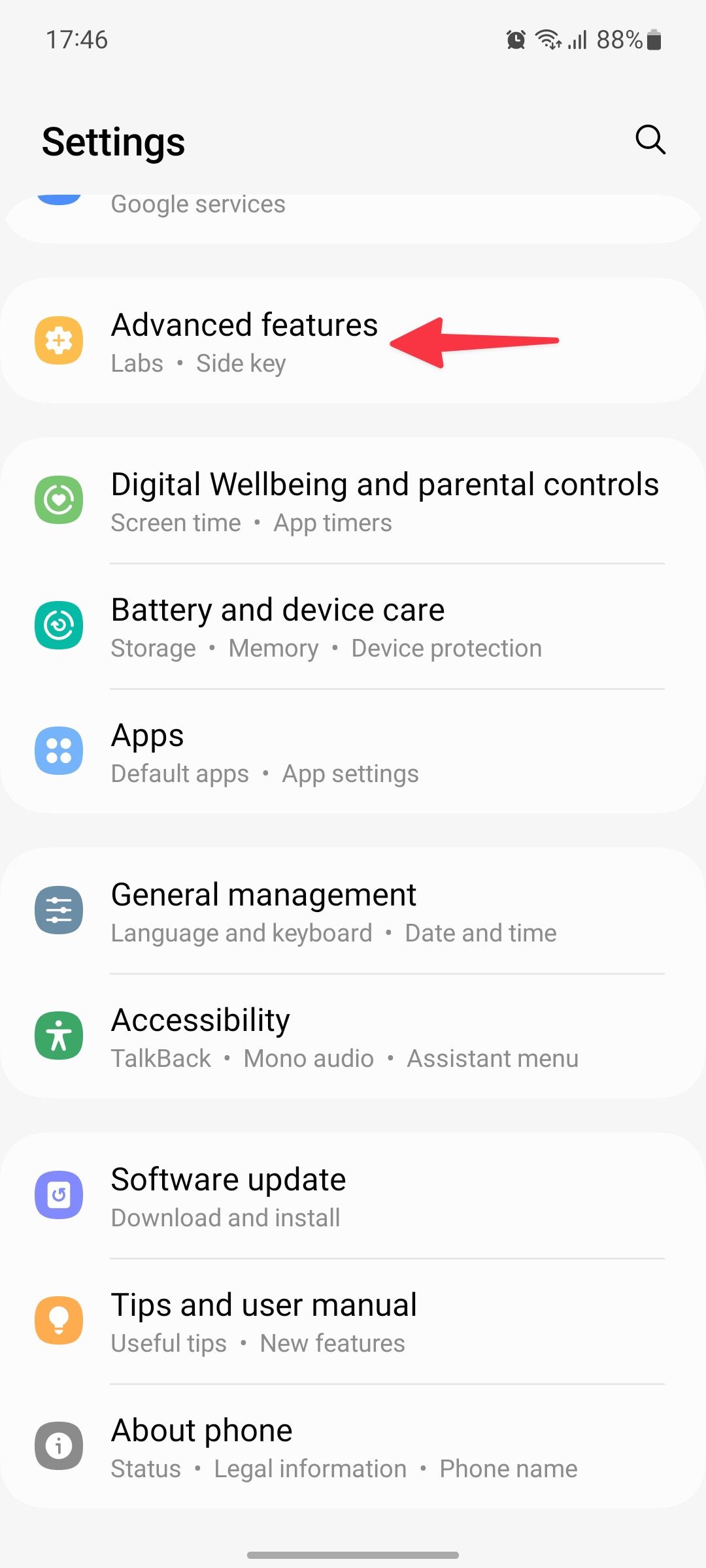
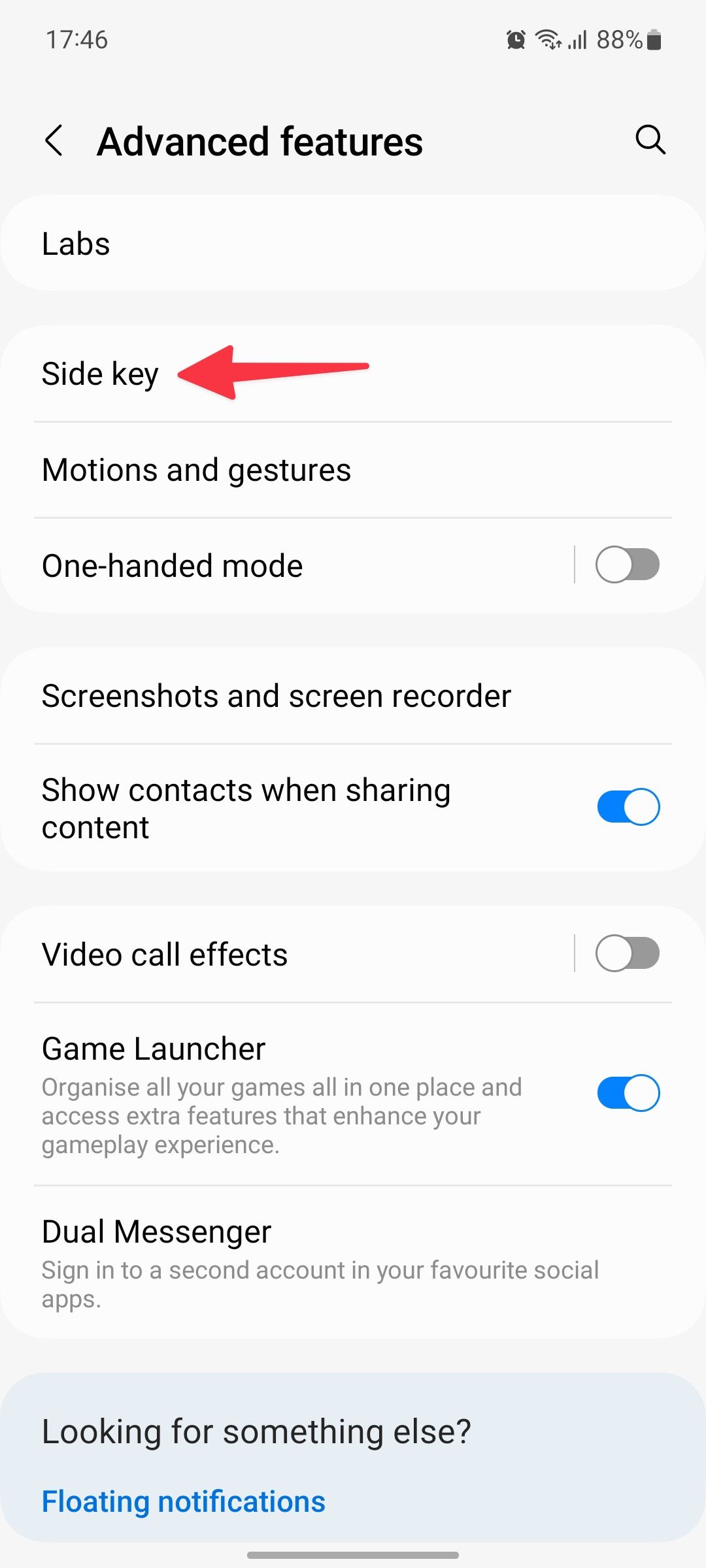
- Enable the Double press toggle. You can quickly launch the camera, open Secure Folder, or set it to open an app.
-
You can also wake up Bixby or open the Power off menu by holding the side key.
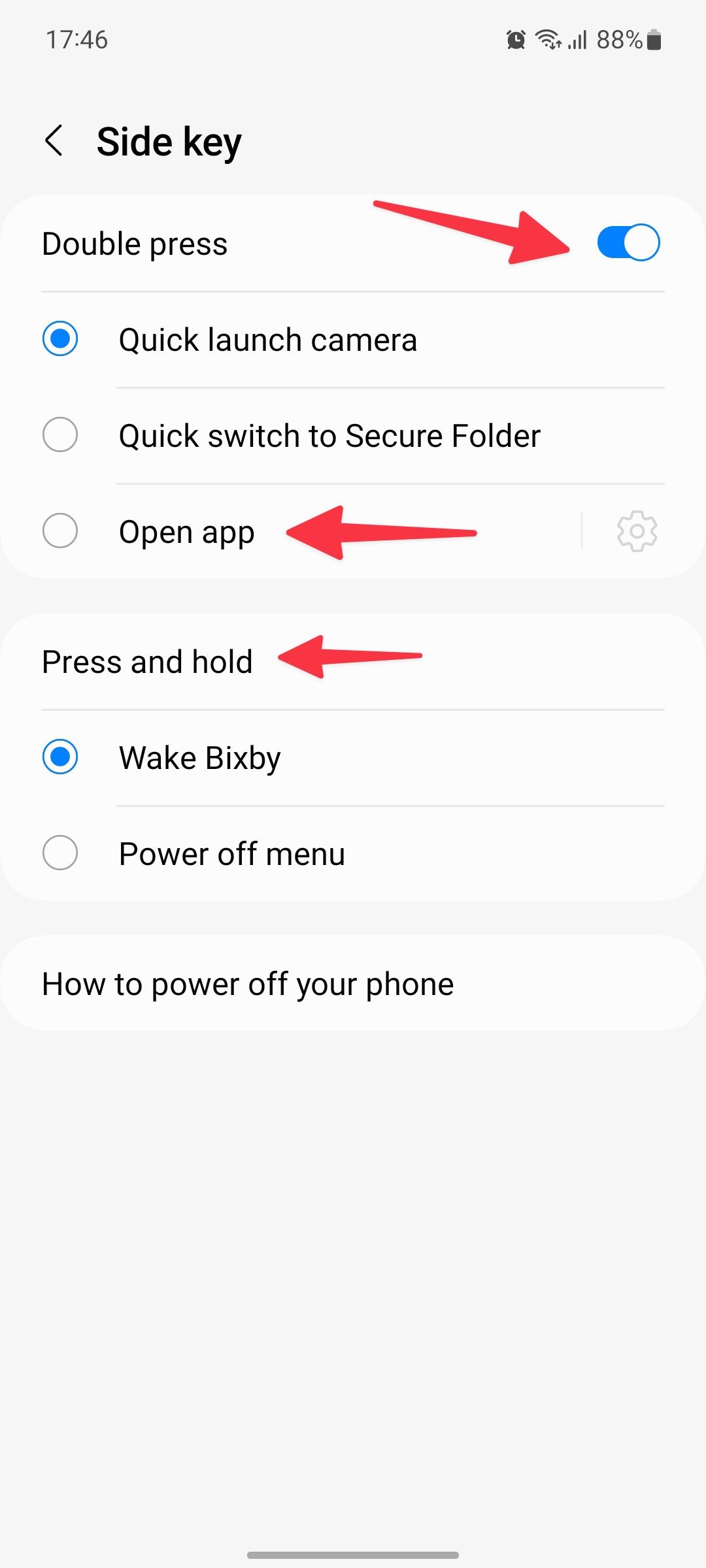
10 Use Dual Messenger
Apps like WhatsApp and Facebook don't make it easy to use multiple accounts. You can check and enable supported social media apps to sign in to a second account.
- Go to Advanced features in Samsung Settings.
- Select Dual Messenger.
- Supported apps appear after you install them. Enable the toggle beside your preferred app and install a second copy on your Samsung phone.
-
You have the option to use a separate contacts list for the installed app.
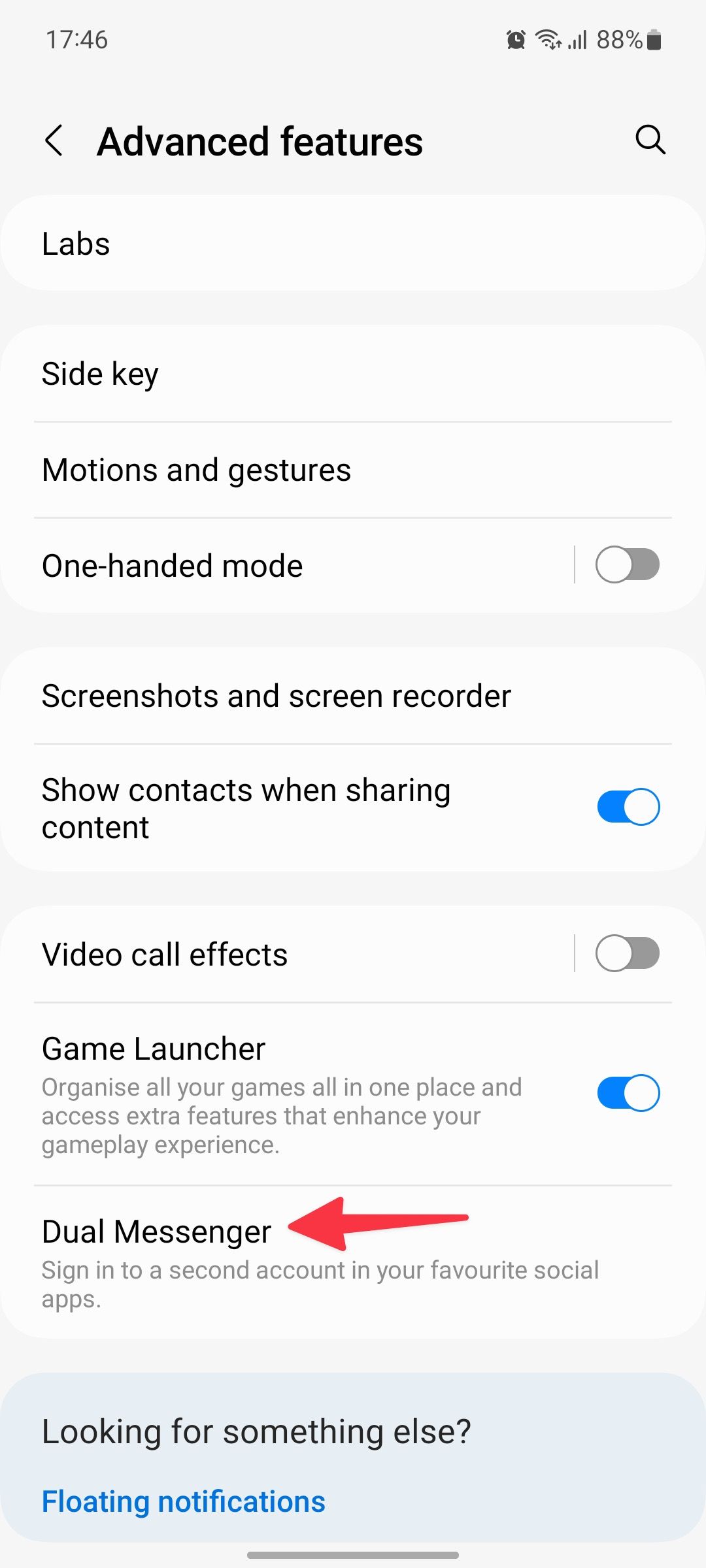
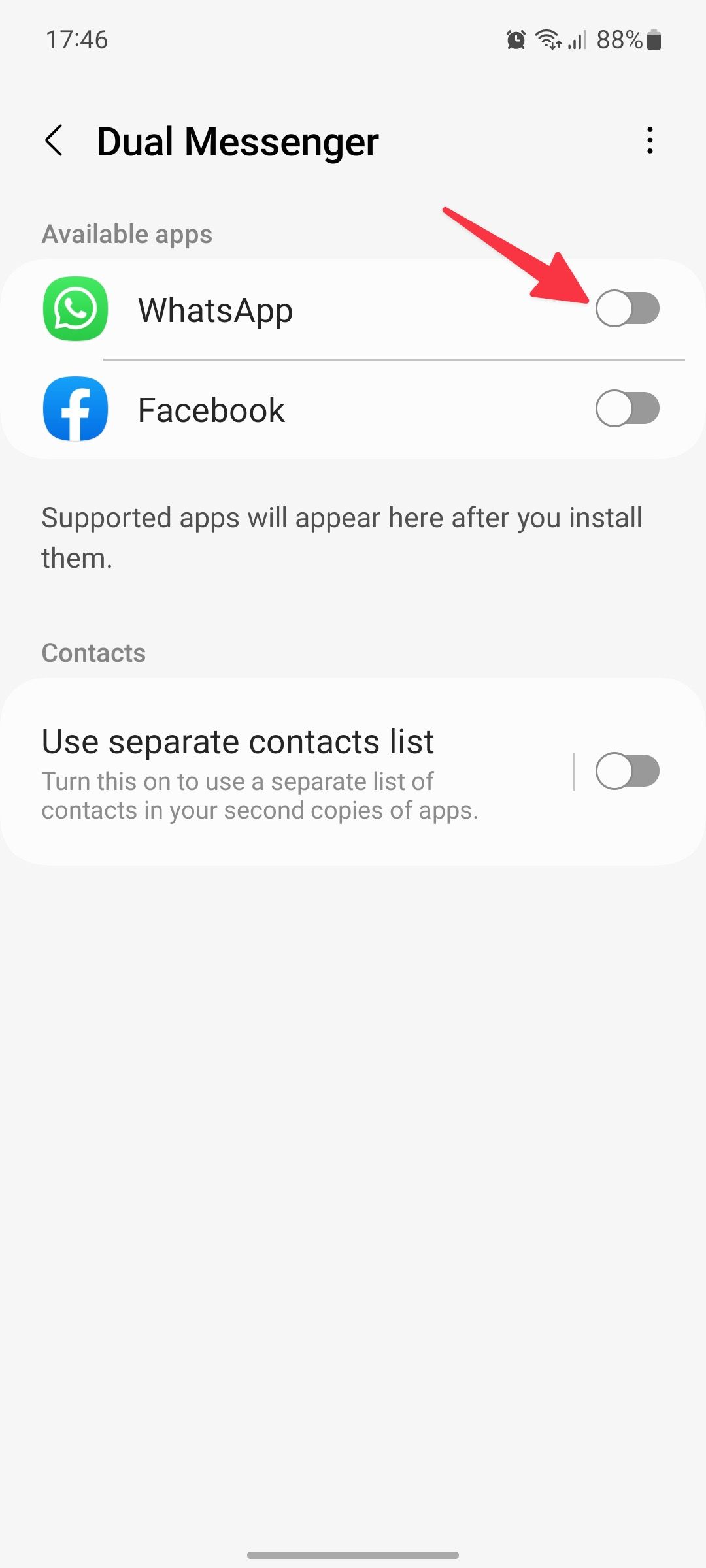
- Open the second social app and set it up with your account details.
If you delete the first messenger app, the second messenger app is also deleted automatically.
11 Hide apps and games
If you don't want your little ones to explore work apps and other addictive games, use the steps below to hide them from your homescreen and apps menu.
- Long-tap on the homescreen and select Settings.
-
Select Hide apps on Home and Apps screens.
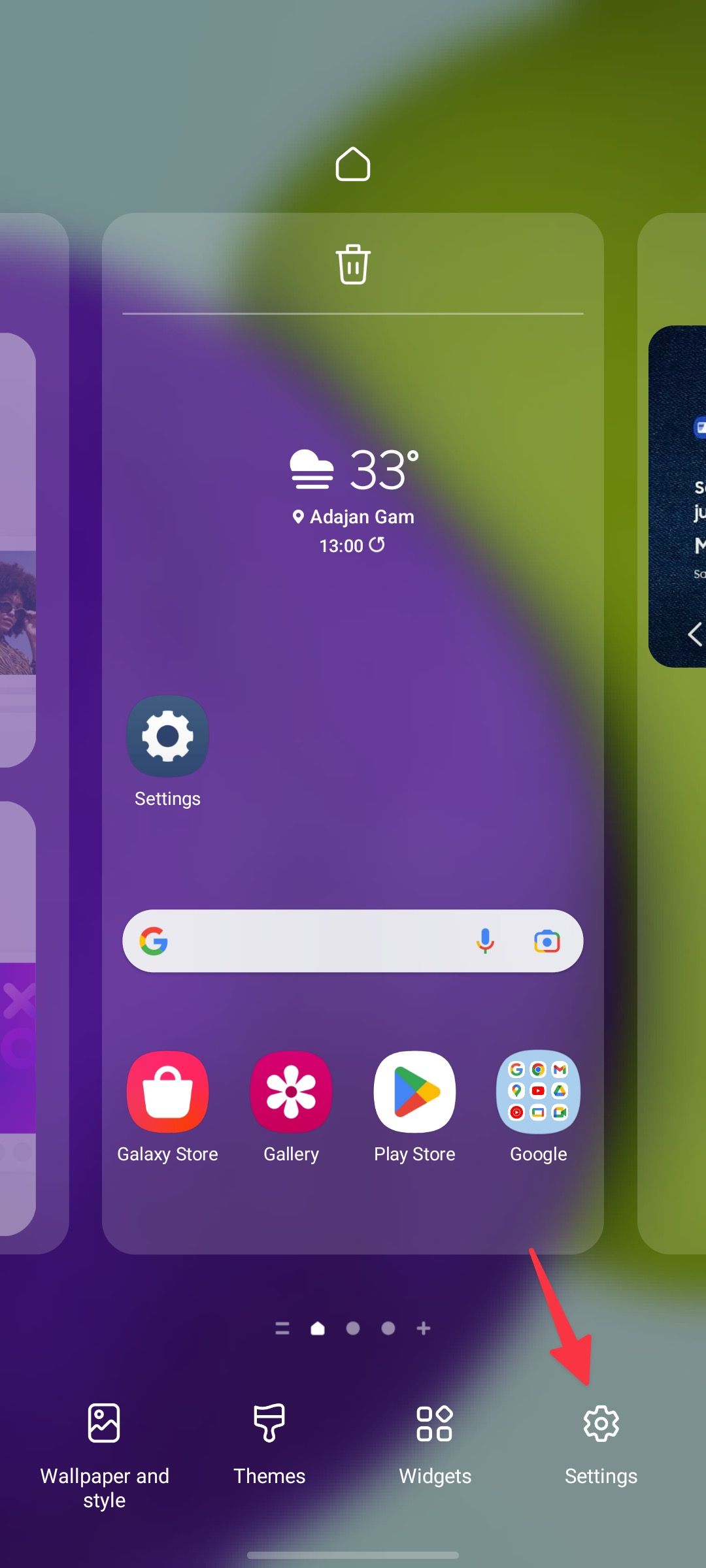
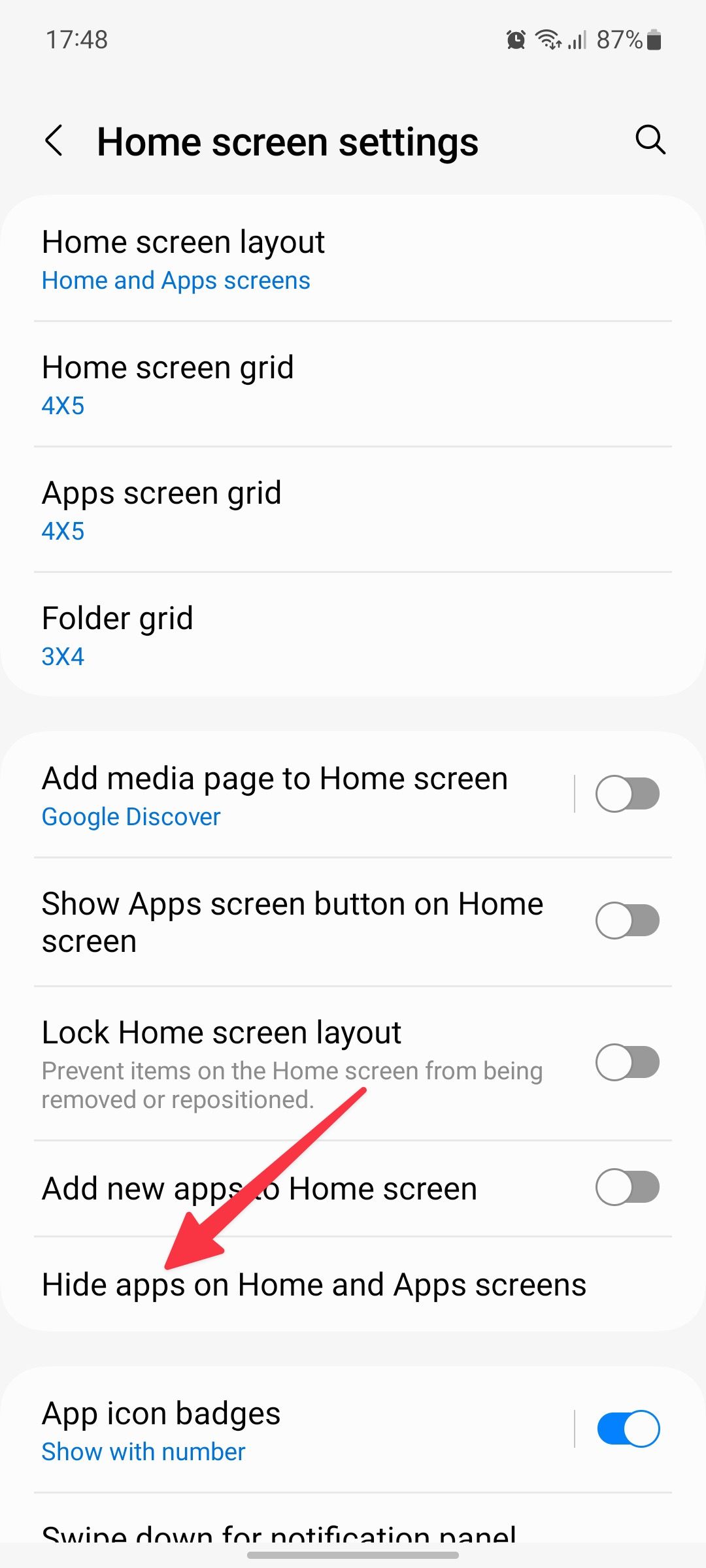
-
Select the apps you want to hide and tap Done.
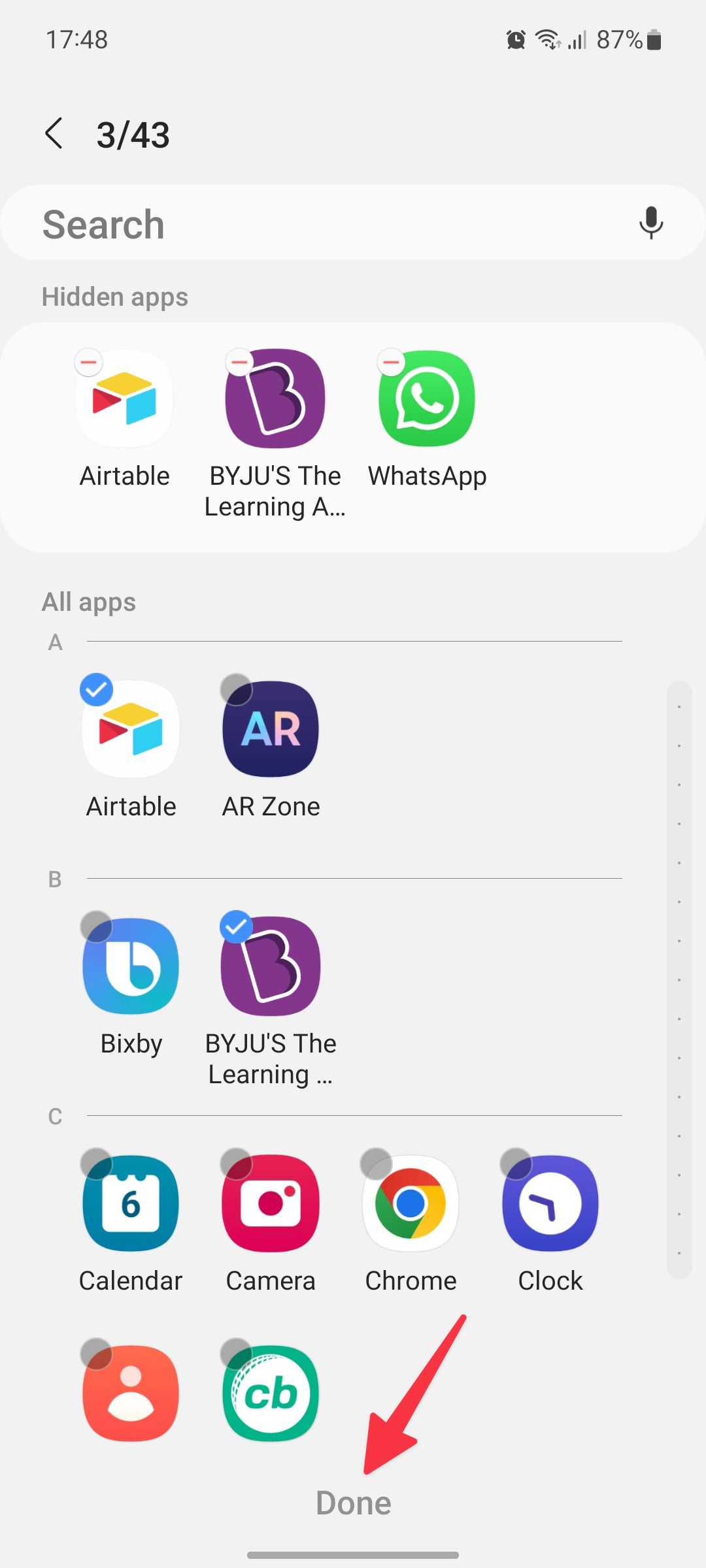
Explore Samsung One UI
Not everyone prefers the default app icon style and size in Samsung One UI. If you are among those, check out our dedicated post and learn how to apply custom icon packs to your Galaxy phone. If you have the latest Samsung phone running One UI 5.0 or a newer version, read our post to set up the perfect homescreen.

